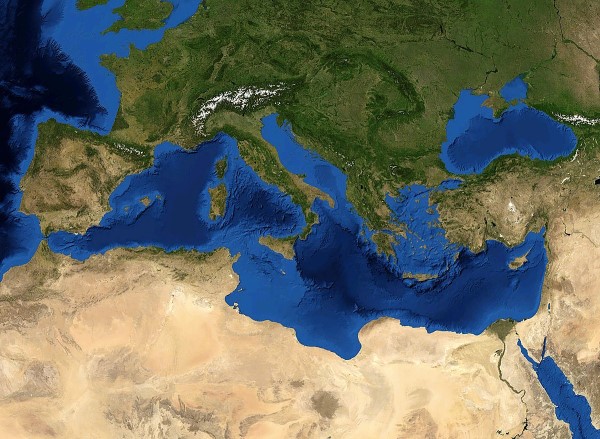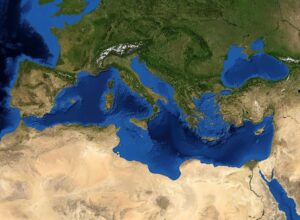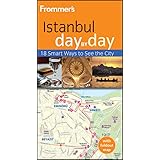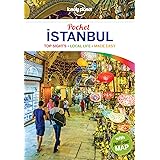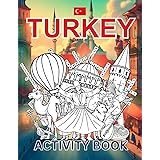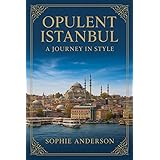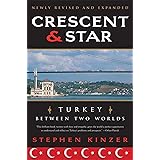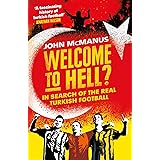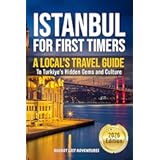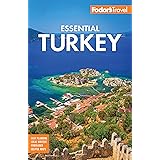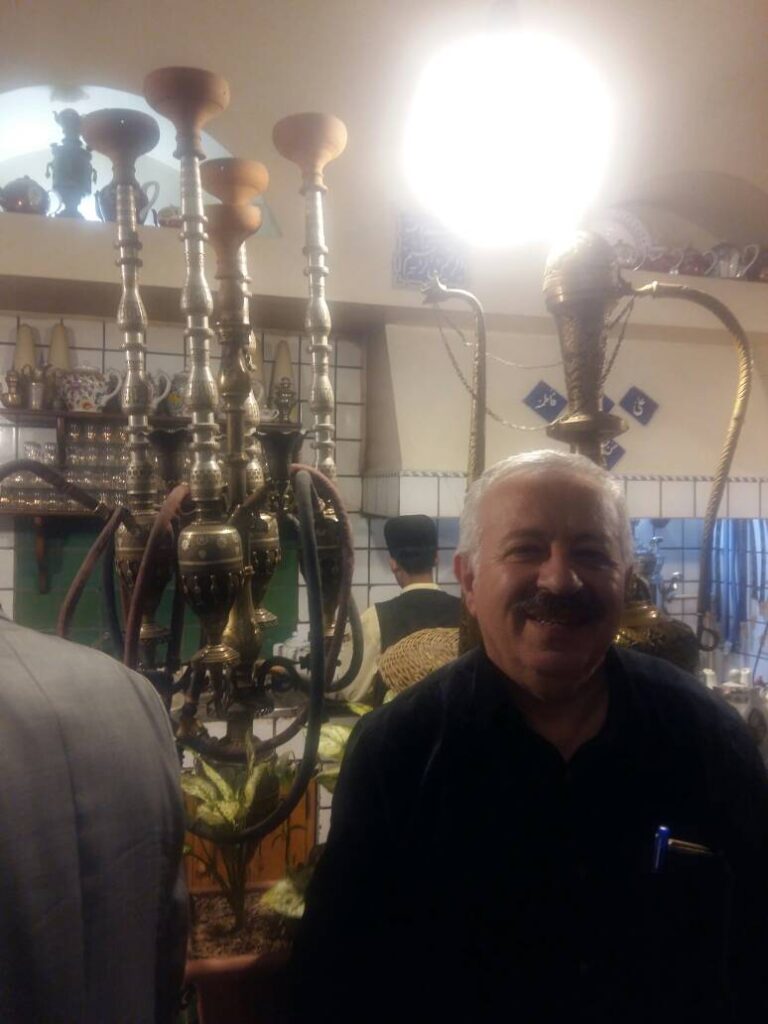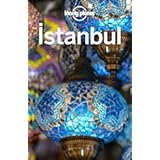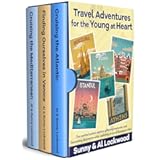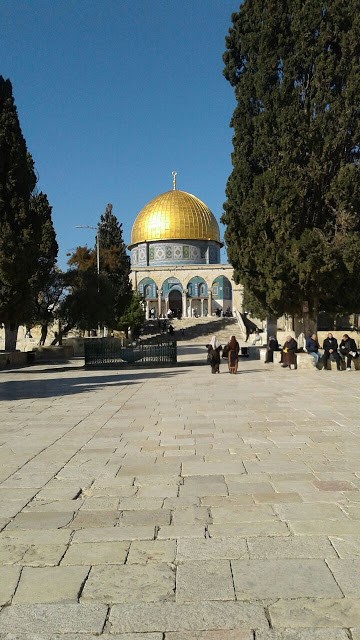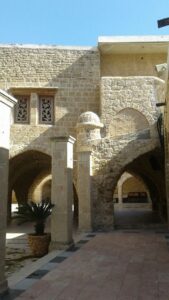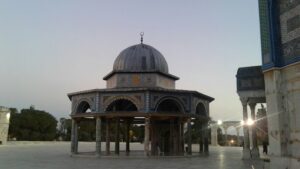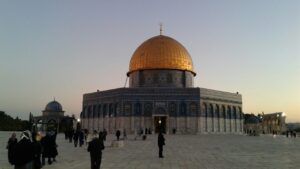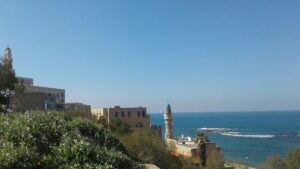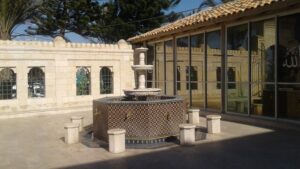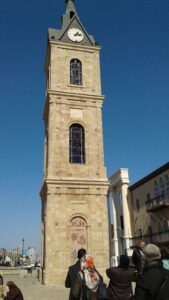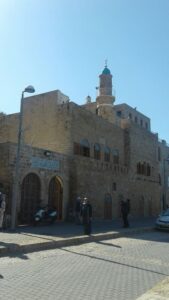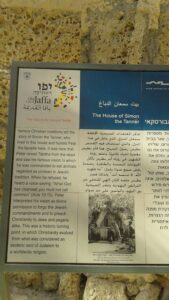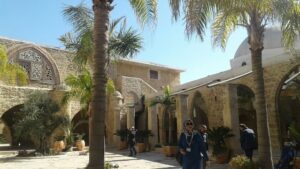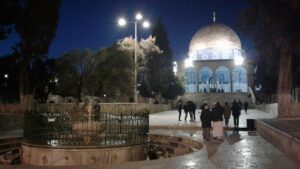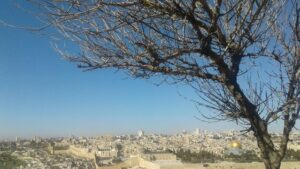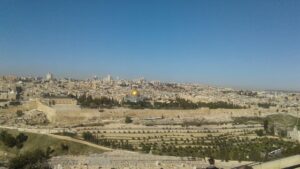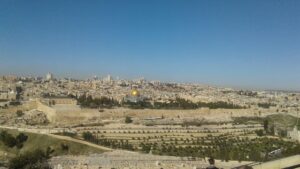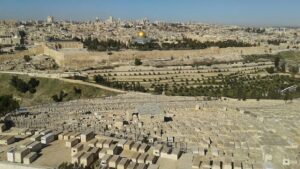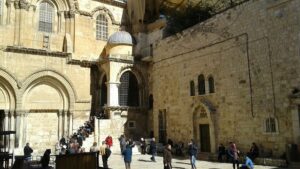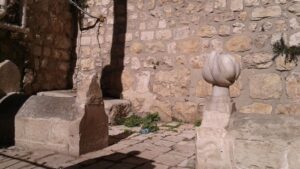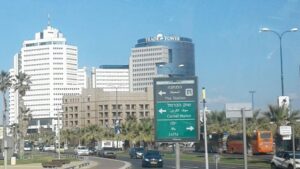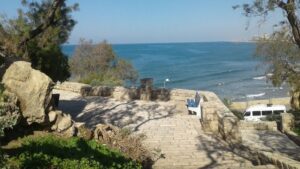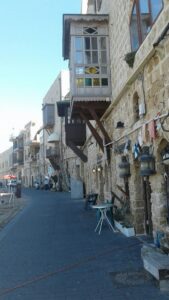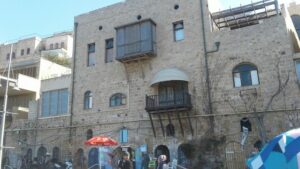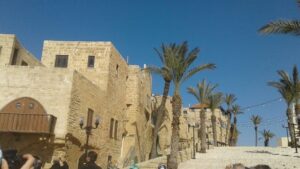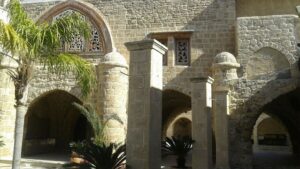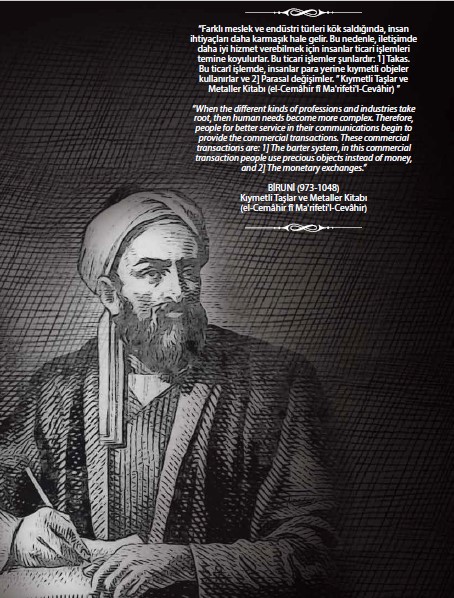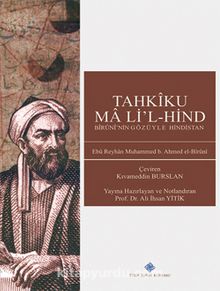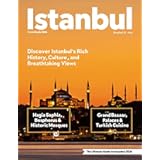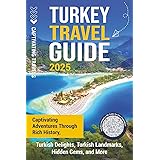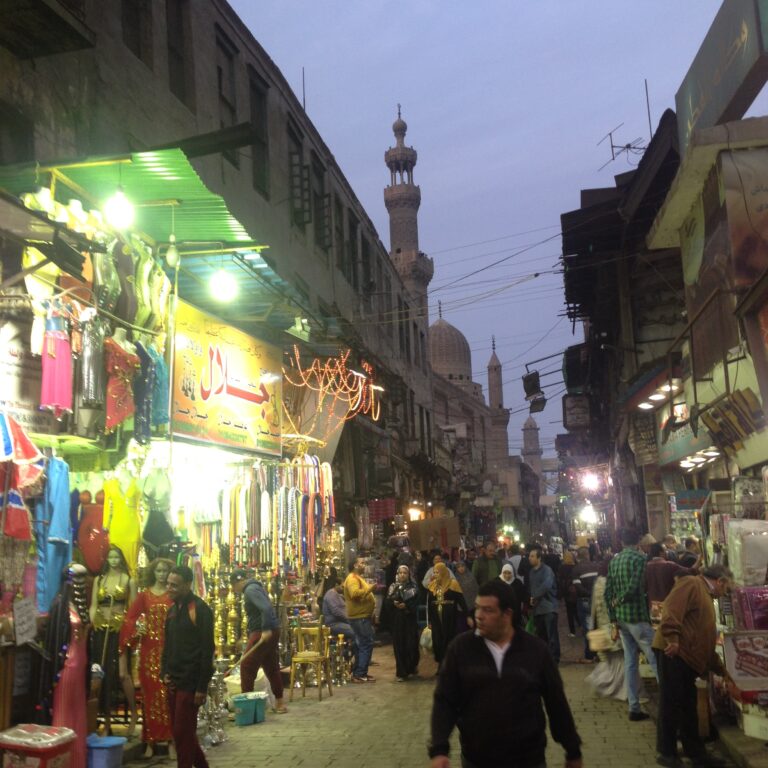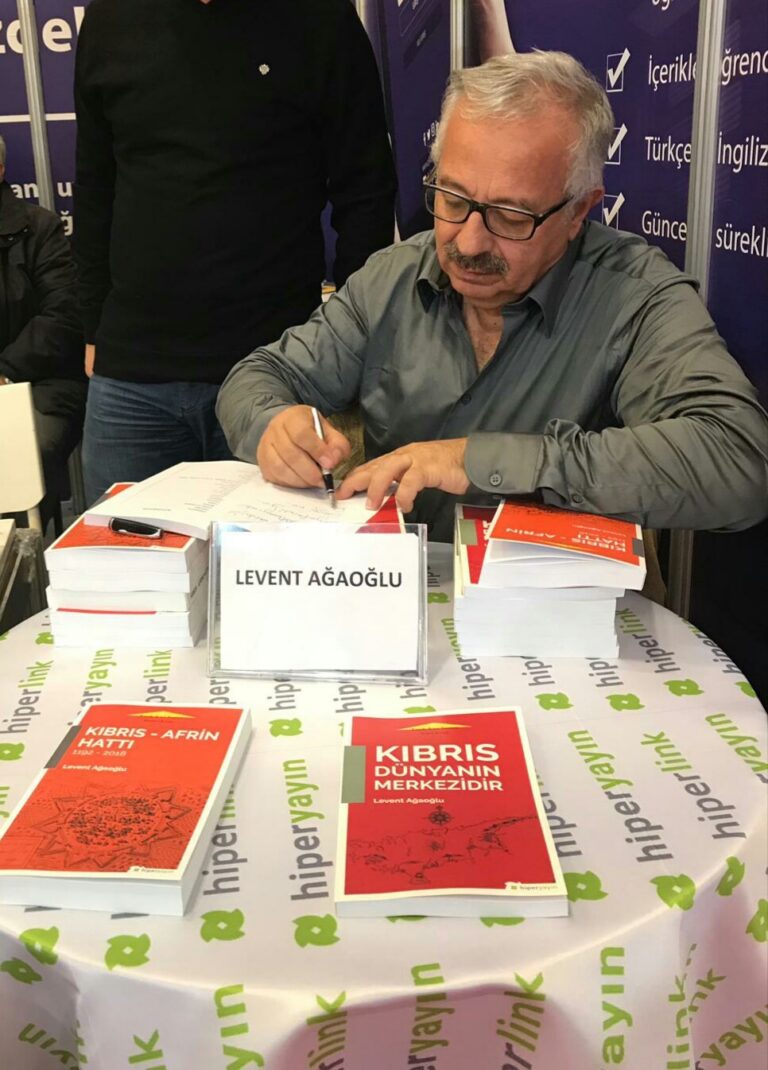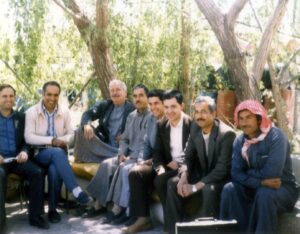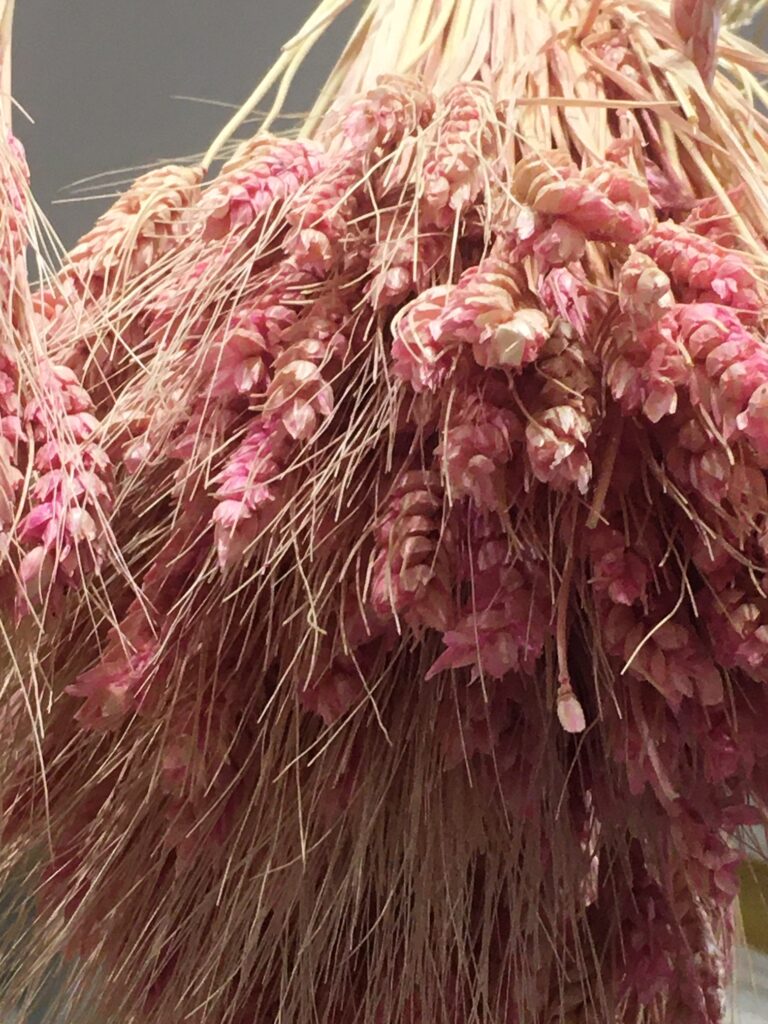Hong Kong and China Travels
Istanbul and Hong Kong
- 15 years ago, Istanbul did not look like Hong Kong at all, it is very similar now, shopping malls, consumer society.
- Hong Kong serves three continents: Asia, America, Australia
- Istanbul serves three continents: Europe, Asia, Africa
- Chinese flights from Istanbul
- They started at 8.8.1998.
- China: Central Country (Zhong Gou)
- 1978-2028: 50-year plan
An important similarity between Hong Kong and Istanbul is related to HUMAN VALUE:
- An important part of the population of Hong Kong was the Shanghai refugees who fled Shanghai and kidnapped their capital with the entry of Mao’s Red Army.
- Istanbul is also enriched by immigrants who emigrated from Rumelia (Bulgaria, Yugoslavia) and refugees from Greece.
- Refugee psychology and the traumas they have experienced have led people to become more connected to life, to be more hardworking and productive in their work.
- Contrary to popular belief, the highest price in exports to 50 countries was in the Chinese market.
- I learned Mandarin Chinese to localize in a global Marketplace.
- I worked directly with customers to be “face to face with the market“
- I used the Chinese name (Ai Li Min-ring service people)
Difference of Culture
- When I went to the showroom opening of my Chinese customer, I was very surprised that the host Mr.Ng had taken the first piece of the whole chicken brought out and ate it in the atmosphere full of guests.
- When I asked my Chinese secretary about the reason, he said that the chicken was a symbol of fertility and that his office ate the first meal because it was faithful to bring fertility.
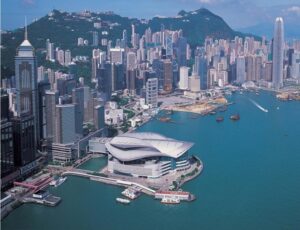
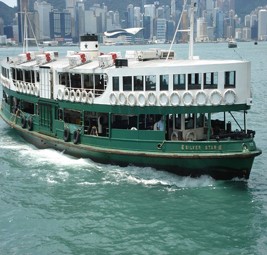
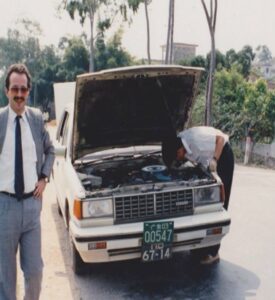
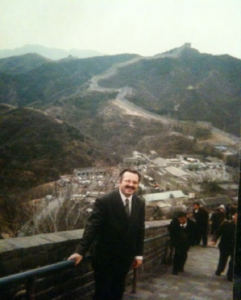
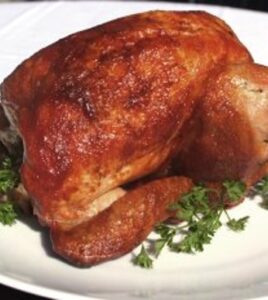
Pocket Rough Guide Istanbul: Travel Guide with eBook (Pocket Rough Guides)
$7.16 (as of 29/10/2025 03:17 GMT +03:00 - More infoProduct prices and availability are accurate as of the date/time indicated and are subject to change. Any price and availability information displayed on [relevant Amazon Site(s), as applicable] at the time of purchase will apply to the purchase of this product.)Istanbul
$23.23 (as of 29/10/2025 03:17 GMT +03:00 - More infoProduct prices and availability are accurate as of the date/time indicated and are subject to change. Any price and availability information displayed on [relevant Amazon Site(s), as applicable] at the time of purchase will apply to the purchase of this product.)Crescent and Star: Turkey Between Two Worlds
$6.32 (as of 29/10/2025 03:17 GMT +03:00 - More infoProduct prices and availability are accurate as of the date/time indicated and are subject to change. Any price and availability information displayed on [relevant Amazon Site(s), as applicable] at the time of purchase will apply to the purchase of this product.)Istanbul, City map 1:10.000, City Pocket map + The Big Five
$11.64 (as of 29/10/2025 03:17 GMT +03:00 - More infoProduct prices and availability are accurate as of the date/time indicated and are subject to change. Any price and availability information displayed on [relevant Amazon Site(s), as applicable] at the time of purchase will apply to the purchase of this product.)DK Top 10 Istanbul (Pocket Travel Guide)
$11.40 (as of 29/10/2025 03:17 GMT +03:00 - More infoProduct prices and availability are accurate as of the date/time indicated and are subject to change. Any price and availability information displayed on [relevant Amazon Site(s), as applicable] at the time of purchase will apply to the purchase of this product.)Rick Steves Istanbul: With Ephesus & Cappadocia
$3.38 (as of 29/10/2025 03:17 GMT +03:00 - More infoProduct prices and availability are accurate as of the date/time indicated and are subject to change. Any price and availability information displayed on [relevant Amazon Site(s), as applicable] at the time of purchase will apply to the purchase of this product.)Laminated Istanbul Map by Borch (English) (English, Spanish, French, Italian and German Edition)
$5.96 (as of 29/10/2025 03:17 GMT +03:00 - More infoProduct prices and availability are accurate as of the date/time indicated and are subject to change. Any price and availability information displayed on [relevant Amazon Site(s), as applicable] at the time of purchase will apply to the purchase of this product.)Welcome to Hell?: In Search of the Real Turkish Football
$5.10 (as of 29/10/2025 03:17 GMT +03:00 - More infoProduct prices and availability are accurate as of the date/time indicated and are subject to change. Any price and availability information displayed on [relevant Amazon Site(s), as applicable] at the time of purchase will apply to the purchase of this product.)Istanbul For First Timers: A Local's Travel Guide To Turkiye's Hidden Gems and Culture
$2.99 (as of 29/10/2025 03:17 GMT +03:00 - More infoProduct prices and availability are accurate as of the date/time indicated and are subject to change. Any price and availability information displayed on [relevant Amazon Site(s), as applicable] at the time of purchase will apply to the purchase of this product.)Rick Steves Istanbul: With Ephesus & Cappadocia
$15.22 (as of 29/10/2025 03:17 GMT +03:00 - More infoProduct prices and availability are accurate as of the date/time indicated and are subject to change. Any price and availability information displayed on [relevant Amazon Site(s), as applicable] at the time of purchase will apply to the purchase of this product.)To the City: Life and Death Along the Ancient Walls of Istanbul
$18.00 (as of 30/10/2025 03:18 GMT +03:00 - More infoProduct prices and availability are accurate as of the date/time indicated and are subject to change. Any price and availability information displayed on [relevant Amazon Site(s), as applicable] at the time of purchase will apply to the purchase of this product.)The Christian Traveler's Guide to the Holy Land
$19.99 (as of 30/10/2025 03:18 GMT +03:00 - More infoProduct prices and availability are accurate as of the date/time indicated and are subject to change. Any price and availability information displayed on [relevant Amazon Site(s), as applicable] at the time of purchase will apply to the purchase of this product.)Türkiye (Turkey) Map (National Geographic Adventure Map, 3018)
$10.39 (as of 30/10/2025 03:18 GMT +03:00 - More infoProduct prices and availability are accurate as of the date/time indicated and are subject to change. Any price and availability information displayed on [relevant Amazon Site(s), as applicable] at the time of purchase will apply to the purchase of this product.)Pocket Rough Guide Istanbul: Travel Guide with eBook (Pocket Rough Guides)
$7.16 (as of 30/10/2025 03:18 GMT +03:00 - More infoProduct prices and availability are accurate as of the date/time indicated and are subject to change. Any price and availability information displayed on [relevant Amazon Site(s), as applicable] at the time of purchase will apply to the purchase of this product.)Bosphorus Private
$94.46 (as of 30/10/2025 03:18 GMT +03:00 - More infoProduct prices and availability are accurate as of the date/time indicated and are subject to change. Any price and availability information displayed on [relevant Amazon Site(s), as applicable] at the time of purchase will apply to the purchase of this product.)Lonely Planet Pocket Istanbul (Pocket Guide)
$11.25 (as of 30/10/2025 03:18 GMT +03:00 - More infoProduct prices and availability are accurate as of the date/time indicated and are subject to change. Any price and availability information displayed on [relevant Amazon Site(s), as applicable] at the time of purchase will apply to the purchase of this product.)DK Eyewitness Travel Guide Turkey (Eyewitness Travel Guides)
$16.16 (as of 30/10/2025 03:18 GMT +03:00 - More infoProduct prices and availability are accurate as of the date/time indicated and are subject to change. Any price and availability information displayed on [relevant Amazon Site(s), as applicable] at the time of purchase will apply to the purchase of this product.)Fodor's Essential Turkey (Full-color Travel Guide)
$17.99 (as of 30/10/2025 03:18 GMT +03:00 - More infoProduct prices and availability are accurate as of the date/time indicated and are subject to change. Any price and availability information displayed on [relevant Amazon Site(s), as applicable] at the time of purchase will apply to the purchase of this product.)Fodor's Essential Turkey (Full-color Travel Guide)
$3.38 (as of 30/10/2025 03:18 GMT +03:00 - More infoProduct prices and availability are accurate as of the date/time indicated and are subject to change. Any price and availability information displayed on [relevant Amazon Site(s), as applicable] at the time of purchase will apply to the purchase of this product.)A Guide to Biblical Sites in Greece and Turkey
$11.00 (as of 30/10/2025 03:18 GMT +03:00 - More infoProduct prices and availability are accurate as of the date/time indicated and are subject to change. Any price and availability information displayed on [relevant Amazon Site(s), as applicable] at the time of purchase will apply to the purchase of this product.)Iran: Cities and Philosophers
Ali Kosh, Tappe/Tepe-i Ali Kuş Ö2
Dehloran, Khuzestan, Iran: site on the east side of the ‘Fertile Crescent’ with evidence of plant breeding and animal domestication (1961) 8000-3000 BC
***
Khorasan/Khorasan/Khorasan (“Orient”) B 1, 4, 5
Iran-Afghanistan: An important region in terms of cultural history, located in eastern Iran, it is assumed to be the hometown of Zoroaster, 10th century BC; It enjoyed its golden age under the Samanids, Ghaznavids, and Seljuks who lived around the Oxos [Amu Derya] River 873-1240, its cultural centers — Merv, Tüs, Nishapur, Mashhad, Vegetablevar
***
Iran T 4-6, 8, 11, S 2-5, 8, B 1, 2, 4, 5, S 5, F 1, 5
Southwest Asia: Fertile Crescent and eastern (“non-Semitic” or “non-Afro-Asian) part of the “Nil-Amu Darya Region”, ancient agriculture (Zagros Mountains) and urban and writing culture (Elam, Namazga) ) 1st by BC; Imperial Aramaic as linguae francae 6th-3rd BC. century, Hellenic 3rd century BC.
***
-
st century, Arabic 7.-18. century and Persian 16th-18th. century and played an extremely important role in cultural transmission between East and West (East Asia, South Asia and Europe); important dynasties: Achaemenids 700-330 BC, Seleucid period (Hellenized Macedonians) 312-64 BC, Arshaki (Parthian) period 247 BC – 224 AD, Sassanid period 224-651, Abbasid period 750-945/1258, Samani period (in Transoxiana and Khorasan) between 873-1005, Seljuks (Turks) between 1040-1157, Ilhans (Mongols) between 1256-1335 and Safavid period between 1501-1722; prominent capitals—Parsa, Ktesiphon, Baghdad, Bukhara, Tabriz, Isfahan, and Shiraz; important regions — Media and Parsa/Pers, Khorasan and Khorezm and Transoxiana; origin region of gnostic Zoroastrianism (10th century BC – 10th century AD) and Manichaeanism (3rd-8th centuries), Islamic period 640 (Shiite period 16th century); golden age of philosophy 9th-11th.YY. (notable scholars: er-Razi, Ibn Sina, al-Biruni and al-Ghazali) and 16.-17. YY. (“Isfahan School”, important scholar: Molla Sadra
Isfahan/Esfahan/Aspahan A 6, 8, 11, B 1, 4, 5, G 5, F 1, 5
Iran: Capital of many different dynasties, its golden age in Seljuk 11-12. YY . and lived under Safavid (promoters of Shiism) rule 1598-1722, important ruler: Abbas the Great 1588-1629; Ferdowsi 10th century, Avicenna 11th century, al-Khayyam 11-12. YY.; “Isfahan School” in philosophy was founded by Mir Damad and Molla Sadra 16.-17. YY. between; Vegetables 19th century.
***
Merağa B 1, 4, 5, G 5, F 1
Azerbaijan, Iran: the first headquarters of the Mongolian ilkhans in 1258-65, the observatory and associated institute of mathematics and astronomy with an international team was founded by the philosopher Nasiruddin Tusi; Fahreddin er-Razi, es-Sühreverdi 12th century, Tusi, Kütbüddin Şirazi 13th century.
***
Nishapur/Nev-Sabur/Nishapur T 6, B 1, 4, 5, F 1
Khorasan, Iran: Sassanid administrative center 5th-6th. century, cultural center 9.-13. YY.; Borzuya 6th century. (?), al-‘Amiri 10th century, Nasır-ı Khusraw, al-Mawardi, al-Khayyam 11th century. al-Ghazali 11.-12. century., Chishti 12th century. Celaleddin Rumi, et-Tusi, 13th century; neighboring area — Tus and Mashhad Niuheliang BC 6
Parsa/Persepolis/Taht-ı Cemşid Ö 4, B 2
Near Shiraz, Fars, Iran: Achaemenid summer residences and cult centers were built by Darius the Great in 518 BC and destroyed by Alexander the Great in 330 BC; (C. Niebuhr 1770; Mesopotamian cuneiform begins to be deciphered with the deciphering of the Persepolis inscriptions, the youngest cuneiform script begins to be deciphered, written in the youngest cuneiform, alphabetic old Persian script, deciphered by GF Grotefend in Göttingen 1803)
Parsa/Persis/Persian/Persia/Iran T 4, Ö 4, 5, 8, B 1, 2, 4, 5, G 5
The core region that gave its name to the first Persian (Achaemenid) empire between 550-330 BC, important rulers: Great Küros/Kuruş (II) between 558-530 BC and Darius the Great/Darayavaus (I) between 522-486 BC; It was the central region in the golden age of Persian poetry 13.-14. YY.; expression covering the whole of Iran as a general concept
Parthava/Parthia/Anxi F 4, 5, B 2, G 5
Iran – Central Asia: Persian satrapy 6th century BC, core region of an Iranian empire over territories under the Arshakis 247 BC to 224 AD: commercial and cultural contacts with East and South Asia via the nascent Silk road (Zoroastrian Gnosticism, Buddhadharma and transfer of Aramaic script) and contacts with the Roman Empire (Parthian Wars); An Shigao, 2nd century BC.
***
Rey/Ragha(i) B 1, 2, 4, 5, G 5
Media/Iran: Today a district of Tehran; et-Tabari 9th century, Abu Bakr er-Razi 9th-10th. century., al-Amiri, al-Biruni (?) 10. century., Ibn Miskeveyh 10.-11. century, Ibn Sina 11th century, Fahreddin er-Razi 12th century.
***
Shiraz/Shiraz T 6, 11, Ö 8, B 1, 4, 5, G 5
Fars, Iran: Cultural center (honorary name: Evi Dar al-‘Ilm), its golden age of Mongol and Timurid rule 13.-15. century, 16th-17th century under the Safavids. YY. and Karim Khan lived as the capital of Zend 1750-1779; Shirazi, Sa’di, (al-Baydavi) 13th century, Hafz 14th century. ed-Devvani 15th century, Molla Sadra 16th-17th. YY. neighboring area — Parsa/Persepolis, Siral (intercontinental port city, — Sevahili)
***
Khorasan, Iran, Cultural center 9.-11. YY. “The city that is famous for its important educational institutions, even raising the suspicion of over-education” (Goethe, West-East Divan, 1819); (Harun er-Rashid 9th century), Ferdowsi, al-Ghazali 11th century, al-Tusi 13th century; nearby areas: Mashhad (Shiite pilgrimage site 817 around Imam Reza’s tomb), Mir Damad 16th century, Sehzevari 19th century; Nisapur
Source: Atlas of Philosophy
Opulent Istanbul: A Journey In Style
$8.55 (as of 29/10/2025 03:17 GMT +03:00 - More infoProduct prices and availability are accurate as of the date/time indicated and are subject to change. Any price and availability information displayed on [relevant Amazon Site(s), as applicable] at the time of purchase will apply to the purchase of this product.)Lonely Planet Istanbul (Travel Guide)
$13.19 (as of 29/10/2025 03:17 GMT +03:00 - More infoProduct prices and availability are accurate as of the date/time indicated and are subject to change. Any price and availability information displayed on [relevant Amazon Site(s), as applicable] at the time of purchase will apply to the purchase of this product.)Rick Stein’s Secret France
$14.99 (as of 29/10/2025 03:17 GMT +03:00 - More infoProduct prices and availability are accurate as of the date/time indicated and are subject to change. Any price and availability information displayed on [relevant Amazon Site(s), as applicable] at the time of purchase will apply to the purchase of this product.)Welcome to Hell?: In Search of the Real Turkish Football
$5.10 (as of 29/10/2025 03:17 GMT +03:00 - More infoProduct prices and availability are accurate as of the date/time indicated and are subject to change. Any price and availability information displayed on [relevant Amazon Site(s), as applicable] at the time of purchase will apply to the purchase of this product.)Turkey Activity Book For Kids: Learn about Turkish History, Landmarks, Wildlife While Solving Word Puzzles, Mazes, Crosswords, and Coloring Pages for Kids and Families
$9.99 (as of 29/10/2025 03:17 GMT +03:00 - More infoProduct prices and availability are accurate as of the date/time indicated and are subject to change. Any price and availability information displayed on [relevant Amazon Site(s), as applicable] at the time of purchase will apply to the purchase of this product.)DK Top 10 Istanbul (Pocket Travel Guide)
$11.40 (as of 29/10/2025 03:17 GMT +03:00 - More infoProduct prices and availability are accurate as of the date/time indicated and are subject to change. Any price and availability information displayed on [relevant Amazon Site(s), as applicable] at the time of purchase will apply to the purchase of this product.)Türkiye: Everything You Need to Know
$11.99 (as of 29/10/2025 03:17 GMT +03:00 - More infoProduct prices and availability are accurate as of the date/time indicated and are subject to change. Any price and availability information displayed on [relevant Amazon Site(s), as applicable] at the time of purchase will apply to the purchase of this product.)The Turkish Cookbook
$40.48 (as of 29/10/2025 03:17 GMT +03:00 - More infoProduct prices and availability are accurate as of the date/time indicated and are subject to change. Any price and availability information displayed on [relevant Amazon Site(s), as applicable] at the time of purchase will apply to the purchase of this product.)Travel Adventures for the Young at Heart: Two high-spirited seniors capture glittering memories and fascinating discoveries in Amsterdam, Barcelona, Venice, Athens, Istanbul and other magical places.
$5.99 (as of 29/10/2025 03:17 GMT +03:00 - More infoProduct prices and availability are accurate as of the date/time indicated and are subject to change. Any price and availability information displayed on [relevant Amazon Site(s), as applicable] at the time of purchase will apply to the purchase of this product.)Türkiye (Turkey) Marco Polo Map
$14.99 (as of 29/10/2025 03:17 GMT +03:00 - More infoProduct prices and availability are accurate as of the date/time indicated and are subject to change. Any price and availability information displayed on [relevant Amazon Site(s), as applicable] at the time of purchase will apply to the purchase of this product.)Istanbul, City map 1:10.000, City Pocket map + The Big Five
$15.88 (as of 30/10/2025 03:18 GMT +03:00 - More infoProduct prices and availability are accurate as of the date/time indicated and are subject to change. Any price and availability information displayed on [relevant Amazon Site(s), as applicable] at the time of purchase will apply to the purchase of this product.)The Turkish Cookbook
$40.48 (as of 30/10/2025 03:18 GMT +03:00 - More infoProduct prices and availability are accurate as of the date/time indicated and are subject to change. Any price and availability information displayed on [relevant Amazon Site(s), as applicable] at the time of purchase will apply to the purchase of this product.)Fodor's Essential Turkey (Full-color Travel Guide)
$3.38 (as of 30/10/2025 03:18 GMT +03:00 - More infoProduct prices and availability are accurate as of the date/time indicated and are subject to change. Any price and availability information displayed on [relevant Amazon Site(s), as applicable] at the time of purchase will apply to the purchase of this product.)Rick Steves Istanbul: With Ephesus & Cappadocia
$15.22 (as of 30/10/2025 03:18 GMT +03:00 - More infoProduct prices and availability are accurate as of the date/time indicated and are subject to change. Any price and availability information displayed on [relevant Amazon Site(s), as applicable] at the time of purchase will apply to the purchase of this product.)Bosphorus Private
$94.46 (as of 30/10/2025 03:18 GMT +03:00 - More infoProduct prices and availability are accurate as of the date/time indicated and are subject to change. Any price and availability information displayed on [relevant Amazon Site(s), as applicable] at the time of purchase will apply to the purchase of this product.)DK Top 10 Istanbul (Pocket Travel Guide)
$11.40 (as of 30/10/2025 03:18 GMT +03:00 - More infoProduct prices and availability are accurate as of the date/time indicated and are subject to change. Any price and availability information displayed on [relevant Amazon Site(s), as applicable] at the time of purchase will apply to the purchase of this product.)Istanbul Travel Guide 2025/2026: Sultanahmet, Beyoğlu: Shopping and Nightlife, Kadıköy, Balat and Fener, Markets and Shopping,Hagia Sophia,Must-See ... Galata Tower. (Best Travel Guides 2025)
$11.99 (as of 30/10/2025 03:18 GMT +03:00 - More infoProduct prices and availability are accurate as of the date/time indicated and are subject to change. Any price and availability information displayed on [relevant Amazon Site(s), as applicable] at the time of purchase will apply to the purchase of this product.)Türkiye (Turkey) Map (National Geographic Adventure Map, 3018)
$10.39 (as of 30/10/2025 03:18 GMT +03:00 - More infoProduct prices and availability are accurate as of the date/time indicated and are subject to change. Any price and availability information displayed on [relevant Amazon Site(s), as applicable] at the time of purchase will apply to the purchase of this product.)Lonely Planet Turkiye (Travel Guide)
$19.25 (as of 30/10/2025 03:18 GMT +03:00 - More infoProduct prices and availability are accurate as of the date/time indicated and are subject to change. Any price and availability information displayed on [relevant Amazon Site(s), as applicable] at the time of purchase will apply to the purchase of this product.)Bake Sale
$1.80 (as of 30/10/2025 03:18 GMT +03:00 - More infoProduct prices and availability are accurate as of the date/time indicated and are subject to change. Any price and availability information displayed on [relevant Amazon Site(s), as applicable] at the time of purchase will apply to the purchase of this product.)Palestinian Diary
1. Mahmudiye Complex, Jaffa
2. Jerusalem, Al-Aqsa Mosque
3. Jerusalem, Dome of the Rock
4. Jaffa
5. The only surviving Ottoman artifact in the heart of Telaviv and the last in this land; Hasanpasa Mosque
6. The clock tower built by Abdulhamid in honor of his 25th year on the throne. Near Mahmudiye Complex
7. Jaffa Port
8. Masjid-i Bahr in the port of Jaffa.
9. Friday prayers and external azan are not allowed.
10. Jaffa
11. View of the Dome of the Rock from the Qibla Masjid
12. Al-Aqsa Mosque
13. A view of Masjid al-Aqsa on Mount Olives. The remaining part of the wall
14. The view of Masjid al-Aqsa on Mount Zeytin. The remaining part of the wall
15. The view of Masjid al-Aqsa on Mount Zeytin. The remaining part of the wall
16. The view of Masjid al-Aqsa on Mount Zeytin. The part inside the city wall. The lead dome on the left behind the yellow dome is the qibla mosque. Those stones right in front are Jewish graves. That valley is the Kidron Valley.
17. Church of the Apocalypse
18. Ottoman Tombs in Hz.Ömer Square (Walledged Jerusalem)
19. Telaviv World Trade Center
20. Jaffa city and port
21. Jaffa city and port
22. Jaffa city and port
23. Jaffa city and port
24. Mahmudiye Complex, Jaffa
The country, which still resonates with the name Palestine in Muslim hearts, but is under Israeli occupation, is divided into three parts: Israel with an 85% Israeli population (the place where Palestinians live is called the West Side ), Palestine and Gaza (Walled and neither Israel nor (Official) Palestine. (There is no entry permit for sightseeing purposes, only politicians and special permits can enter there. However, when the Refah Gate on the Egyptian border is opened for 3 days every month, aid, students and those in urgent need of health are allowed to pass).
JAFFA
Our first mansion in Palestine is the historical port city of Jaffa. It is also referred to as the 48 Lands by the Jews since they first settled here in 1948. 85% of the population is Israeli. Of course, this population ratio did not happen naturally: Since the invasion began, most of the Palestinians have been exiled from the city and the rest have become a minority in the “State of Israel”. The city of Telaviv, which is today Israel’s official capital , is the name given to the modern part of this city of Jaffa outside the city walls.
The city of Jaffa is a city where the Ottoman Empire did not hesitate to sign its name on Palestinian lands. Developing an architectural style according to the unique conditions of each region, the Ottomans preferred stone structures for Palestine and brought an earthly paradise that promises splendor and peace to the soul in Jaffa. The city of Jaffa, which was established on the shore of one of the oldest ports in the world , served as a commercial city in the Ottoman period as well, and became one of the vital sources of the imperial economy, including the small amount of taxes collected from the Christians who came to the Church of Resurrection for pilgrimage. But unfortunately, this heavenly city, after the weakening of the Ottoman Empire, shared the same fate with the other heavens of the empire, that is, maybe it was left without a protector. It was persecuted by the British, the most looting community ever seen in human history . As soon as the British set foot on these lands, they determined to erase the traces of the Ottoman Empire from the city and began to demolish it. However, Ottomanism, which clings to the soil of Jaffa with solid roots despite so many cuttings and pruning, has permeated the city and has always remained green. While walking through the streets of the city, it is quite normal to come across historical mosques where Armenian families are settled (eg, the Tâbîi Mosque), restaurants with alcoholic drinks next to mosques, and bars that increase the volume and dose of entertainment during the adhan hours.
Mahmudiye Mosque, the most important of the Ottoman works that gave color to the city . This mosque, which was started to be built by Mahmud II and completed in 1812, is the largest mosque in the city. It is also the meeting point of the Palestinian people and the Friday mosque. Although there are other mosques in the city, only Friday is allowed in this mosque. The mosque was built in the form of a kulliye, and a sundial, which is still in use today, was placed in its courtyard. The barracks and the court were deemed appropriate as adjacent to the mosque. Shops were donated around it to cover the expenses of the barracks, court and mosque trio. Although the complex is surrounded by bars today, it is used for its purpose inside, but it was not as fortunate as the barracks and the court mosque. The barracks is getting ready to be a hotel these days; the court is assigned to municipal services by Israel.
A little further on, in the modern city of Telaviv , another Ottoman artifact greets you among the skyscrapers. Hasan Bey Mosque is the last work of the Ottoman Empire built in Palestine. This mosque, the construction of which was completed in 1914, was tried to be converted into a restaurant by offering large sums of money, but it was not successful. In recent years, it has been exposed to intimidation attempts and attacks. When faced with the danger of being without a community, that is, confiscated because there are no local Muslims around, the volunteer mosque guards try to withdraw the congregation with tea and coffee. Muslim people come with their cars and show their body (existence) under the pretext of tea and coffee.
As for Tel Aviv … Israel, with its unassuming worldview , destroyed dozens of historical monuments and built a fully-fledged city with skyscrapers of a kind that can be seen in any modern city of the world and without any architectural features, and named it “Spring Hill”. These skyscraper hills claim to be the center of the world’s economy and are directly or indirectly profit partners of every international investment. And there is no doubt that when the State of Zion is fully established, the cradle of the global economy will pose a great danger to America as a serious competitor and is perhaps now preparing the end of America.
JERUSALEM
Our route after Jaffa is Jerusalem, the cradle of the holy… Jerusalem is the common value of Jews, Christians and even Muslims. For Jews, Jerusalem is the point where God began to create the universe. For Christians, it is the center of resurrection. In the eyes of Muslims, Jerusalem is the witness of the ascension. Above all, the heaven on earth, where the heavens are closest to the earth, for all three monotheistic religions…
Throughout its history, Jerusalem has seen dozens of conflicts and has hosted dozens of heroes and prophets in its bosom. The Kidron Valley (also known as the Valley of Hell), located within the borders of Jerusalem today, is full of tombs of prophets and saints. The pride of the Jews is King David, the Prophet. which was the capital of David’s world domination; Solomon built the blessed temple by ruling both jinn and humans; Hz. that Yahya was sacrificed by incorrigible souls; Hz. Jerusalem is the city where Jesus was taken to heaven. However, Hz. It is the home of Mary, Jacob and even Isaac and his offspring. This city, which was sanctified by the steps of blessed people, could envelop the soul with the fragrance of peace at every step. Unless man knew how to be content and wanted more of the world…
While the city is trying to preserve so many sacred things under its wings, each of them exhibits the traces left by the cruelty of the avid people who want to own it alone. From Babylonians to Romans; He was badly wounded in the clashes that broke out while he was passing from Muslims to Crusaders and back to Muslims . And it should be proud to say that it could only breathe during the times when Muslims ruled, and it could be shared between the members of the three major religions in an air free from tension. Today, Jerusalem is shedding tears of longing for the only nation that has surrendered its sanctity, that is, the Muslim Ummah, which has retreated into a corner.
Jerusalem by Muslims It was conquered during the caliphate of Omar and throughout the Muslim rule, Omar’s trust was decisive in the relationship between the Muslim rulers and the non-Muslim subjects of the city. Isn’t it that Omar, when he first entered the city, rejected the offer of the Christian clergyman who offered him to perform the prayer whose time had come, while he was in the Church of the Resurrection, out of fear that they would turn the church into a mosque after him. For this reason, perhaps the only square whose name did not change under Muslim, Crusader, British and even Jewish rule was Ömer b. Khattab Square.
Kubbetu’s-Sahara , which has become the symbol of Jerusalem and is located within the borders of Masjid al-Aqsa, was built with a golden dome during the Umayyad period. However, when it could not resist the time and suffered a lot of damage , it was renovated during the Fatimid period. The Fatimid emir preferred a lead dome instead of the golden dome, and the dome remained in this state until the British mandate rule. In 1924, Architect Kemaleddin from Turkey was invited by the Supreme Islamic Council to repair the Masjid al-Aqsa complex . The Turkish architect proposes that the dome be restored to its original state, that is, that it is covered with gold again, but this proposal is not accepted. It is not accepted, but this idea eventually becomes a part of the Jerusalem cause. That is to say, the King of Jordan and the King of Saud had a great deal of contention on this issue, and in the end, the King of Jordan, Hussein, ended the conflict by selling his personal villa in London and saying that he wanted to cover the expenses of the golden dome on his own behalf. As it can be understood, Jerusalem is a cosy beauty that every king strives to make his property, that a thousand people want, but only one brave man gets his share.
Just before the Seljuk Turks conquered Anatolia, they conquered Jerusalem with a victory against the Fatimids, and then went further south and conquered Palestine, and held the region from 1070 to 1098. During the reign of the Seljuks , many scholars such as Gazzali and Ibn Arabi visited the city, madrasas were built and religious and human sciences were taught there. Gazzali wrote part of his famous work, İhyau Ulumi’d-din, while he was teaching in one of these madrasahs. All in all, this short period has been quite fruitful.
City of the Crusaders when the hands were massacred Muslim and Jewish population in the city and established the Kingdom of Jerusalem in order to prevent the entry of the increase in the population is Christian, Muslim and Jewish Armenians, Copts, Nestorians et al. Christians settled in the city. When Salahaddin Eyyubi took the city from the Crusaders after a long siege in 1187, the city opened its doors to Muslims and Jews again. After the Ayyubids , the city was captured by the Mamluks in 1250, and in 1517 it was handed over to the Ottomans. remained under their control until surrendered. The Mamluks took steps to preserve the value of the city. Undoubtedly, the most important of these is the existing Aksa walls. Mamluks while people’s homes Masjid al-Aqsa they raise walls showing foresight in order to prevent them from entering into the boundaries and so they sharpen the Masjid-i Aksâ’n the border. Masjid al-Aqsa, Kubbetu’s-Sahra, is a very large area covering the Aqsa complex, including the Qibla Masjid, where the Prophet was the imam for other prophets.
And finally, when the city was reunited with Ottoman lands by Yavuz Sultan Selim in 1517, it found the peace it was longing for. The arrival of the Ottomans in the city brought a period of security and stability not only for Muslims but also for Jews and Christians. When the Ottomans took over the administration, the old city, which remained within the walls, was divided into four main regions. These are: Muslim quarter, Jewish quarter, Christian quarter and Armenian quarter.
For the Jews , who saw the Ottoman sovereignty as a blessing from the Lord, a period began when they did not feel themselves in exile. So much so that they approached the Zionists with suspicion until the city fell out of the hands of the Ottomans . The Jews took charge in the state levels under the Ottoman rule, and thus they rose from the level of exile to the level of subjects/population. If this situation is compared to the situation of the Jews living in Europe of the period, it is easier to understand what the Ottomans meant for the region.
Another group that benefited most from the Ottoman peace in Jerusalem was the Armenian Christians . Although they were the smallest congregation in Jerusalem, they both had special rights in the Church of the Resurrection and a neighborhood of their own in the old city. However, when you go to the Armenian quarter today, you are greeted with an understanding that is far from Ottoman peace. Along the walls of the neighborhood, a map showing Anatolia as Armenia and southeast as Kurdistan accompanies us and, of course, genocide avengers… A similar map also adorned the walls of an Armenian church in Jaffa.
This attitude of Armenian Christians towards the Ottomans is unique to them and is not valid for other Christians. So many Christian denominations live in Jerusalem. And Hz. The Church of the Resurrection, which Ömer refrained from praying because he wanted it to remain a church, is one of the rare common values for all Christians. This is St. It is one of the important pilgrimage points for all Christians, as it is believed that Jesus’ tomb is located and will be resurrected here. And the keys to the church have been in two separate Muslim families since the Ottoman period. Members of Muslim families come every morning to open the doors and close them at night. This is the solution that the Ottomans found in response to a crisis that emerged in the race for merit among the different Christian sects of the Ottoman Empire. And the fact that this practice is currently in force must be an indication that there is no discomfort from remaining Ottoman. The fact that the religious officials of the church continue to wear the fez also supports this behavior.
In the Kidron Valley outside the city walls, Hz. There is the Church of the Virgin Mary , which is believed to contain the tomb of the Virgin Mary . This building, which served as a church during the week during the Ottoman period, was used as a mosque on Fridays. Inside the church, the mihrab that signifies those days is still in place. This application, which sounds interesting, was not found strange by either Muslims or Christians in Ottoman Jerusalem.
If we go back inside the wall to Kubbetu’s-Sahra ; The carpets of the mosque are sent from Turkey. It was based on a dream in which Abdulhamid saw the Dome of the Rock. After this dream, Fatimatu’z-Zehra had the mihrab built in the masjid, and he also procured the masjid’s carpets from his personal treasury.
Jerusalem is today the unofficial de facto capital of Israel. All administrative bodies such as the parliament and ministries are located in this city. The Israeli government is opening the city for settlement in order to make room for all the Jews in the world by running its waters under straw, as if to attract the attention of the whole world. Jewish families earn thousands of dollars a month. It is also clear that the country does not have the economic potential to provide this much income to every Jewish family. But still, it is obvious to ask how all this income flows into the country. Before and after the 2nd World War, the Jews who had no place to go after the attacks against them, or rather “no place to go”, were condemned to this country, which had no other attraction than to host the holy, and were tied here with such attractive incomes. However, these high incomes cannot stay in their hands. Because life is very expensive and even television is taxed.
Jewish clergy are exempt from military service and taxes. They were given the task of continuing the generation by multiplying and 8-9 children were expected from them. However, non-religious Jews are quite uncomfortable with this privilege granted to them. Because this situation requires women to be under military obligation due to the low population and prolonging their military service period. However, this group preferred to have cats and dogs instead of giving birth to children.
The Jews, who sighed and looked at the Aksa Square, where the former Suleiman Temple was located, from the Mount of Olives until the reign of Suleiman the Magnificent , performed their prayers on the wall, which is called the Burak Wall by the Muslims and the Wailing Wall by the Jews, and is a part of the Aksa complex, due to some turmoil in the reign of Sultan Suleiman. permission granted. Since that day, the Jews, facing this wall, are weeping for their former glory and world-wide domination they lost. In other words, they support and inspire the Israeli government with their prayers.
Religious Jews walk briskly and reluctantly to meet people’s eyes. I think this fast walk is inherited from his diaspora Jew ancestors. It is as if this behavior, which their ancestors had to adopt throughout history, was ingrained in their genes through a habit from generation to generation. However, this fear does not seem to be a thing of the past despite Israel’s occupying policies. Because some Jews are advising Israeli youth to obtain a second country citizenship because they believe that Israel’s dominance in this country has a short lifespan. In fact, all Jews do not approve of Israel’s occupation of this city with a Zionist motive, and they even go further and curse because they believe that they delayed the coming of the Messiah because they entered the land of Arz-ı Mevud before its time.
EL-HALIL/HEBRON
This city is densely populated by Muslims and is officially a part of Palestine. The general view of the city and its inhabitants breathes the feeling of a place that is fully occupied: it is deplorable… The people are poor and the children are not happy to beg. There is one of the common values of the three monotheistic religions in this city: Halilu’r-Rahman Masjid. Hz. The temple where the graves of Abraham’s son Isaac and grandson Jacob are located. The mosque was divided into two under Israeli occupation, and some of it was reserved for Jews. The Masjid is also remembered with the al-Khalil Massacre, in which an Israeli soldier murdered 30 Muslims in 1994. The mosque can be entered through Israeli police screening and passport control. This is quite insulting for a temple visitor.
In short, while visiting Palestine, one feels that Israel, which is presented to the world with the perception that it is a very powerful state and nation, does not quite confirm this claim. You walk around the city streets with the pride of being Turkish when you feel that the Jews, who are attached to these lands not with the feelings that make them homeland, but with the feeling of being condemned, are far from being the “nation” that makes a state a state. When you witness the Turkish flags hung on the walls of shops and houses despite the invaders, and the homesickness imposed on the crescents and stars inscribed on mosques, you see that this pride is not unfounded.
Pocket Rough Guide Istanbul: Travel Guide with eBook (Pocket Rough Guides)
$7.16 (as of 29/10/2025 03:17 GMT +03:00 - More infoProduct prices and availability are accurate as of the date/time indicated and are subject to change. Any price and availability information displayed on [relevant Amazon Site(s), as applicable] at the time of purchase will apply to the purchase of this product.)Istanbul, City map 1:10.000, City Pocket map + The Big Five
$11.64 (as of 29/10/2025 03:17 GMT +03:00 - More infoProduct prices and availability are accurate as of the date/time indicated and are subject to change. Any price and availability information displayed on [relevant Amazon Site(s), as applicable] at the time of purchase will apply to the purchase of this product.)Travel Adventures for the Young at Heart: Two high-spirited seniors capture glittering memories and fascinating discoveries in Amsterdam, Barcelona, Venice, Athens, Istanbul and other magical places.
$5.99 (as of 29/10/2025 03:17 GMT +03:00 - More infoProduct prices and availability are accurate as of the date/time indicated and are subject to change. Any price and availability information displayed on [relevant Amazon Site(s), as applicable] at the time of purchase will apply to the purchase of this product.)Türkiye: Everything You Need to Know
$11.99 (as of 29/10/2025 03:17 GMT +03:00 - More infoProduct prices and availability are accurate as of the date/time indicated and are subject to change. Any price and availability information displayed on [relevant Amazon Site(s), as applicable] at the time of purchase will apply to the purchase of this product.)Rick Steves Istanbul: With Ephesus & Cappadocia
$3.38 (as of 29/10/2025 03:17 GMT +03:00 - More infoProduct prices and availability are accurate as of the date/time indicated and are subject to change. Any price and availability information displayed on [relevant Amazon Site(s), as applicable] at the time of purchase will apply to the purchase of this product.)To the City: Life and Death Along the Ancient Walls of Istanbul
$18.00 (as of 29/10/2025 03:17 GMT +03:00 - More infoProduct prices and availability are accurate as of the date/time indicated and are subject to change. Any price and availability information displayed on [relevant Amazon Site(s), as applicable] at the time of purchase will apply to the purchase of this product.)Istanbul in 3 Days| Travel Guide 2025| 3 days plan, local tips, Photos and Online Maps: What to do in Istanbul|where to stay|top restaurants|food guide|day trips|Google maps with best spots.
$4.99 (as of 29/10/2025 03:17 GMT +03:00 - More infoProduct prices and availability are accurate as of the date/time indicated and are subject to change. Any price and availability information displayed on [relevant Amazon Site(s), as applicable] at the time of purchase will apply to the purchase of this product.)Frommer's Istanbul Day By Day (Frommer's Day by Day - Pocket)
$4.07 (as of 29/10/2025 03:17 GMT +03:00 - More infoProduct prices and availability are accurate as of the date/time indicated and are subject to change. Any price and availability information displayed on [relevant Amazon Site(s), as applicable] at the time of purchase will apply to the purchase of this product.)The Mini Rough Guide to Istanbul and the Aegean Coast: Travel Guide with eBook
$9.42 (as of 29/10/2025 03:17 GMT +03:00 - More infoProduct prices and availability are accurate as of the date/time indicated and are subject to change. Any price and availability information displayed on [relevant Amazon Site(s), as applicable] at the time of purchase will apply to the purchase of this product.)DK Top 10 Istanbul (Pocket Travel Guide)
$11.40 (as of 29/10/2025 03:17 GMT +03:00 - More infoProduct prices and availability are accurate as of the date/time indicated and are subject to change. Any price and availability information displayed on [relevant Amazon Site(s), as applicable] at the time of purchase will apply to the purchase of this product.)The Amazing Mrs. Pollifax (Mrs. Pollifax Series Book 2)
$5.99 (as of 30/10/2025 03:18 GMT +03:00 - More infoProduct prices and availability are accurate as of the date/time indicated and are subject to change. Any price and availability information displayed on [relevant Amazon Site(s), as applicable] at the time of purchase will apply to the purchase of this product.)Istanbul, City map 1:10.000, City Pocket map + The Big Five
$15.88 (as of 30/10/2025 03:18 GMT +03:00 - More infoProduct prices and availability are accurate as of the date/time indicated and are subject to change. Any price and availability information displayed on [relevant Amazon Site(s), as applicable] at the time of purchase will apply to the purchase of this product.)Rick Steves Istanbul: With Ephesus & Cappadocia
$15.22 (as of 30/10/2025 03:18 GMT +03:00 - More infoProduct prices and availability are accurate as of the date/time indicated and are subject to change. Any price and availability information displayed on [relevant Amazon Site(s), as applicable] at the time of purchase will apply to the purchase of this product.)Bake Sale
$1.80 (as of 30/10/2025 03:18 GMT +03:00 - More infoProduct prices and availability are accurate as of the date/time indicated and are subject to change. Any price and availability information displayed on [relevant Amazon Site(s), as applicable] at the time of purchase will apply to the purchase of this product.)Istanbul: City of Majesty at the Crossroads of the World
$7.99 (as of 30/10/2025 03:18 GMT +03:00 - More infoProduct prices and availability are accurate as of the date/time indicated and are subject to change. Any price and availability information displayed on [relevant Amazon Site(s), as applicable] at the time of purchase will apply to the purchase of this product.)Lonely Planet Pocket Istanbul (Pocket Guide)
$11.25 (as of 30/10/2025 03:18 GMT +03:00 - More infoProduct prices and availability are accurate as of the date/time indicated and are subject to change. Any price and availability information displayed on [relevant Amazon Site(s), as applicable] at the time of purchase will apply to the purchase of this product.)Bosphorus Private
$94.46 (as of 30/10/2025 03:18 GMT +03:00 - More infoProduct prices and availability are accurate as of the date/time indicated and are subject to change. Any price and availability information displayed on [relevant Amazon Site(s), as applicable] at the time of purchase will apply to the purchase of this product.)The Christian Traveler's Guide to the Holy Land
$19.99 (as of 30/10/2025 03:18 GMT +03:00 - More infoProduct prices and availability are accurate as of the date/time indicated and are subject to change. Any price and availability information displayed on [relevant Amazon Site(s), as applicable] at the time of purchase will apply to the purchase of this product.)Fodor's Essential Turkey (Full-color Travel Guide)
$17.99 (as of 30/10/2025 03:18 GMT +03:00 - More infoProduct prices and availability are accurate as of the date/time indicated and are subject to change. Any price and availability information displayed on [relevant Amazon Site(s), as applicable] at the time of purchase will apply to the purchase of this product.)Strolling Through Istanbul: The Classic Guide to the City
$8.99 (as of 30/10/2025 03:18 GMT +03:00 - More infoProduct prices and availability are accurate as of the date/time indicated and are subject to change. Any price and availability information displayed on [relevant Amazon Site(s), as applicable] at the time of purchase will apply to the purchase of this product.)Thoughts on Economy, Biruni (973-1048)
Rick Steves Istanbul: With Ephesus & Cappadocia
$3.38 (as of 29/10/2025 03:17 GMT +03:00 - More infoProduct prices and availability are accurate as of the date/time indicated and are subject to change. Any price and availability information displayed on [relevant Amazon Site(s), as applicable] at the time of purchase will apply to the purchase of this product.)Türkiye (Turkey) Marco Polo Map
$14.99 (as of 29/10/2025 03:17 GMT +03:00 - More infoProduct prices and availability are accurate as of the date/time indicated and are subject to change. Any price and availability information displayed on [relevant Amazon Site(s), as applicable] at the time of purchase will apply to the purchase of this product.)Pocket Rough Guide Istanbul: Travel Guide with eBook (Pocket Rough Guides)
$7.16 (as of 29/10/2025 03:17 GMT +03:00 - More infoProduct prices and availability are accurate as of the date/time indicated and are subject to change. Any price and availability information displayed on [relevant Amazon Site(s), as applicable] at the time of purchase will apply to the purchase of this product.)Travel Adventures for the Young at Heart: Two high-spirited seniors capture glittering memories and fascinating discoveries in Amsterdam, Barcelona, Venice, Athens, Istanbul and other magical places.
$5.99 (as of 29/10/2025 03:17 GMT +03:00 - More infoProduct prices and availability are accurate as of the date/time indicated and are subject to change. Any price and availability information displayed on [relevant Amazon Site(s), as applicable] at the time of purchase will apply to the purchase of this product.)Istanbul, City map 1:10.000, City Pocket map + The Big Five
$11.64 (as of 29/10/2025 03:17 GMT +03:00 - More infoProduct prices and availability are accurate as of the date/time indicated and are subject to change. Any price and availability information displayed on [relevant Amazon Site(s), as applicable] at the time of purchase will apply to the purchase of this product.)Frommer's Istanbul Day By Day (Frommer's Day by Day - Pocket)
$4.07 (as of 29/10/2025 03:17 GMT +03:00 - More infoProduct prices and availability are accurate as of the date/time indicated and are subject to change. Any price and availability information displayed on [relevant Amazon Site(s), as applicable] at the time of purchase will apply to the purchase of this product.)DK Top 10 Istanbul (Pocket Travel Guide)
$11.40 (as of 29/10/2025 03:17 GMT +03:00 - More infoProduct prices and availability are accurate as of the date/time indicated and are subject to change. Any price and availability information displayed on [relevant Amazon Site(s), as applicable] at the time of purchase will apply to the purchase of this product.)Lonely Planet Istanbul (Travel Guide)
$13.19 (as of 29/10/2025 03:17 GMT +03:00 - More infoProduct prices and availability are accurate as of the date/time indicated and are subject to change. Any price and availability information displayed on [relevant Amazon Site(s), as applicable] at the time of purchase will apply to the purchase of this product.)Laminated Istanbul Map by Borch (English) (English, Spanish, French, Italian and German Edition)
$5.96 (as of 29/10/2025 03:17 GMT +03:00 - More infoProduct prices and availability are accurate as of the date/time indicated and are subject to change. Any price and availability information displayed on [relevant Amazon Site(s), as applicable] at the time of purchase will apply to the purchase of this product.)To the City: Life and Death Along the Ancient Walls of Istanbul
$18.00 (as of 29/10/2025 03:17 GMT +03:00 - More infoProduct prices and availability are accurate as of the date/time indicated and are subject to change. Any price and availability information displayed on [relevant Amazon Site(s), as applicable] at the time of purchase will apply to the purchase of this product.)The Christian Traveler's Guide to the Holy Land
$19.99 (as of 30/10/2025 03:18 GMT +03:00 - More infoProduct prices and availability are accurate as of the date/time indicated and are subject to change. Any price and availability information displayed on [relevant Amazon Site(s), as applicable] at the time of purchase will apply to the purchase of this product.)DK Top 10 Istanbul (Pocket Travel Guide)
$11.40 (as of 30/10/2025 03:18 GMT +03:00 - More infoProduct prices and availability are accurate as of the date/time indicated and are subject to change. Any price and availability information displayed on [relevant Amazon Site(s), as applicable] at the time of purchase will apply to the purchase of this product.)Istanbul: Memories and the City
$1.30 (as of 30/10/2025 03:18 GMT +03:00 - More infoProduct prices and availability are accurate as of the date/time indicated and are subject to change. Any price and availability information displayed on [relevant Amazon Site(s), as applicable] at the time of purchase will apply to the purchase of this product.)The Turkish Cookbook
$40.48 (as of 30/10/2025 03:18 GMT +03:00 - More infoProduct prices and availability are accurate as of the date/time indicated and are subject to change. Any price and availability information displayed on [relevant Amazon Site(s), as applicable] at the time of purchase will apply to the purchase of this product.)Lonely Planet Turkiye (Travel Guide)
$19.25 (as of 30/10/2025 03:18 GMT +03:00 - More infoProduct prices and availability are accurate as of the date/time indicated and are subject to change. Any price and availability information displayed on [relevant Amazon Site(s), as applicable] at the time of purchase will apply to the purchase of this product.)Istanbul: City of Majesty at the Crossroads of the World
$7.99 (as of 30/10/2025 03:18 GMT +03:00 - More infoProduct prices and availability are accurate as of the date/time indicated and are subject to change. Any price and availability information displayed on [relevant Amazon Site(s), as applicable] at the time of purchase will apply to the purchase of this product.)Lonely Planet Pocket Istanbul (Pocket Guide)
$11.25 (as of 30/10/2025 03:18 GMT +03:00 - More infoProduct prices and availability are accurate as of the date/time indicated and are subject to change. Any price and availability information displayed on [relevant Amazon Site(s), as applicable] at the time of purchase will apply to the purchase of this product.)Bake Sale
$1.80 (as of 30/10/2025 03:18 GMT +03:00 - More infoProduct prices and availability are accurate as of the date/time indicated and are subject to change. Any price and availability information displayed on [relevant Amazon Site(s), as applicable] at the time of purchase will apply to the purchase of this product.)Fodor's Essential Turkey (Full-color Travel Guide)
$3.38 (as of 30/10/2025 03:18 GMT +03:00 - More infoProduct prices and availability are accurate as of the date/time indicated and are subject to change. Any price and availability information displayed on [relevant Amazon Site(s), as applicable] at the time of purchase will apply to the purchase of this product.)Istanbul, City map 1:10.000, City Pocket map + The Big Five
$15.88 (as of 30/10/2025 03:18 GMT +03:00 - More infoProduct prices and availability are accurate as of the date/time indicated and are subject to change. Any price and availability information displayed on [relevant Amazon Site(s), as applicable] at the time of purchase will apply to the purchase of this product.)Turkish Scholars and India
Our first Indologist and our first great traveler, astronomer, mathematician, natural scientist, geographer and historian, our first investigative thinker Biruni (973-1048) started his journey to India in 1017, 1000 years ago, and wrote his travel notes under the title of “History of India” in 1030. published. The book was published in its original form in India in 1958. In Turkey, it was brought into our language only in 2015. The two most used words in the index of the book were the MOON and SUN. We have not used this ANCIENT KNOWLEDGE for 1000 years; If we used it, we would be in SPACE.
Let’s listen to the words of the great thinker Cemil Meriç (1916-1987), one of the Meriç tribes, and set out for India, which he discovered with his blind eyes.
The Turks raised three great thinkers who were aware of the contemplation and secrets of India: Musa El Harezmi (780-850), the inventor of the number zero, the astronomer and Indologist El Biruni (973-1048) and Cemil Meriç (1916-1987). In the 800s and 900s, when the West was unaware of India, the Turks started Indology with Harezmi and Biruni. Our Great Thinkers wrote Hind; Harezmi, Biruni, Halide Edip, Cemil Meriç, Bülend Ecevit.
I commemorate the memories of his saints with respect, gratitude and mercy.
The Rough Guide to Turkey (Travel Guide with eBook) (Rough Guide Main Series)
$13.45 (as of 29/10/2025 03:17 GMT +03:00 - More infoProduct prices and availability are accurate as of the date/time indicated and are subject to change. Any price and availability information displayed on [relevant Amazon Site(s), as applicable] at the time of purchase will apply to the purchase of this product.)Travel Adventures for the Young at Heart: Two high-spirited seniors capture glittering memories and fascinating discoveries in Amsterdam, Barcelona, Venice, Athens, Istanbul and other magical places.
$5.99 (as of 29/10/2025 03:17 GMT +03:00 - More infoProduct prices and availability are accurate as of the date/time indicated and are subject to change. Any price and availability information displayed on [relevant Amazon Site(s), as applicable] at the time of purchase will apply to the purchase of this product.)Turkey Activity Book For Kids: Learn about Turkish History, Landmarks, Wildlife While Solving Word Puzzles, Mazes, Crosswords, and Coloring Pages for Kids and Families
$9.99 (as of 29/10/2025 03:17 GMT +03:00 - More infoProduct prices and availability are accurate as of the date/time indicated and are subject to change. Any price and availability information displayed on [relevant Amazon Site(s), as applicable] at the time of purchase will apply to the purchase of this product.)Istanbul, City map 1:10.000, City Pocket map + The Big Five
$11.64 (as of 29/10/2025 03:17 GMT +03:00 - More infoProduct prices and availability are accurate as of the date/time indicated and are subject to change. Any price and availability information displayed on [relevant Amazon Site(s), as applicable] at the time of purchase will apply to the purchase of this product.)ISTANBUL TRAVEL GUIDE 2026 (Full-Color): From Hagia Sophia to the Spice Bazaar, Bosphorus to Topkapi Palace, Experience the History, Food, Art, Shopping, ... and Adventures of This Timeless City
$7.99 (as of 29/10/2025 03:17 GMT +03:00 - More infoProduct prices and availability are accurate as of the date/time indicated and are subject to change. Any price and availability information displayed on [relevant Amazon Site(s), as applicable] at the time of purchase will apply to the purchase of this product.)The Mini Rough Guide to Istanbul and the Aegean Coast: Travel Guide with eBook
$9.42 (as of 29/10/2025 03:17 GMT +03:00 - More infoProduct prices and availability are accurate as of the date/time indicated and are subject to change. Any price and availability information displayed on [relevant Amazon Site(s), as applicable] at the time of purchase will apply to the purchase of this product.)Türkiye (Turkey) Marco Polo Map
$14.99 (as of 29/10/2025 03:17 GMT +03:00 - More infoProduct prices and availability are accurate as of the date/time indicated and are subject to change. Any price and availability information displayed on [relevant Amazon Site(s), as applicable] at the time of purchase will apply to the purchase of this product.)Welcome to Hell?: In Search of the Real Turkish Football
$5.10 (as of 29/10/2025 03:17 GMT +03:00 - More infoProduct prices and availability are accurate as of the date/time indicated and are subject to change. Any price and availability information displayed on [relevant Amazon Site(s), as applicable] at the time of purchase will apply to the purchase of this product.)Türkiye: Everything You Need to Know
$11.99 (as of 29/10/2025 03:17 GMT +03:00 - More infoProduct prices and availability are accurate as of the date/time indicated and are subject to change. Any price and availability information displayed on [relevant Amazon Site(s), as applicable] at the time of purchase will apply to the purchase of this product.)Istanbul For First Timers: A Local's Travel Guide To Turkiye's Hidden Gems and Culture
$2.99 (as of 29/10/2025 03:17 GMT +03:00 - More infoProduct prices and availability are accurate as of the date/time indicated and are subject to change. Any price and availability information displayed on [relevant Amazon Site(s), as applicable] at the time of purchase will apply to the purchase of this product.)The Turkish Cookbook
$40.48 (as of 30/10/2025 03:18 GMT +03:00 - More infoProduct prices and availability are accurate as of the date/time indicated and are subject to change. Any price and availability information displayed on [relevant Amazon Site(s), as applicable] at the time of purchase will apply to the purchase of this product.)Turkey Travel Guide: Captivating Adventures through Rich History, Turkish Delights, Turkish Landmarks, Hidden Gems, and More (Traveling the World)
$13.69 (as of 30/10/2025 03:18 GMT +03:00 - More infoProduct prices and availability are accurate as of the date/time indicated and are subject to change. Any price and availability information displayed on [relevant Amazon Site(s), as applicable] at the time of purchase will apply to the purchase of this product.)Istanbul: City of Majesty at the Crossroads of the World
$7.99 (as of 30/10/2025 03:18 GMT +03:00 - More infoProduct prices and availability are accurate as of the date/time indicated and are subject to change. Any price and availability information displayed on [relevant Amazon Site(s), as applicable] at the time of purchase will apply to the purchase of this product.)Istanbul: The Imperial City
$4.56 (as of 30/10/2025 03:18 GMT +03:00 - More infoProduct prices and availability are accurate as of the date/time indicated and are subject to change. Any price and availability information displayed on [relevant Amazon Site(s), as applicable] at the time of purchase will apply to the purchase of this product.)Rick Steves Istanbul: With Ephesus & Cappadocia
$15.22 (as of 30/10/2025 03:18 GMT +03:00 - More infoProduct prices and availability are accurate as of the date/time indicated and are subject to change. Any price and availability information displayed on [relevant Amazon Site(s), as applicable] at the time of purchase will apply to the purchase of this product.)Fodor's Essential Turkey (Full-color Travel Guide)
$17.99 (as of 30/10/2025 03:18 GMT +03:00 - More infoProduct prices and availability are accurate as of the date/time indicated and are subject to change. Any price and availability information displayed on [relevant Amazon Site(s), as applicable] at the time of purchase will apply to the purchase of this product.)Turkey Travel and Exploration Guide - 2025: The Ultimate Traveler's Guide to Turkey from the Experiences of a Local Guide
$15.90 (as of 30/10/2025 03:18 GMT +03:00 - More infoProduct prices and availability are accurate as of the date/time indicated and are subject to change. Any price and availability information displayed on [relevant Amazon Site(s), as applicable] at the time of purchase will apply to the purchase of this product.)Learn Turkish language self-study (level one for beginners) : Learn to read, write, speak and understand Turkish by yourself, even if you are a beginner ... (Mastering Turkish: Step by Step) Book 1)
$4.99 (as of 30/10/2025 03:18 GMT +03:00 - More infoProduct prices and availability are accurate as of the date/time indicated and are subject to change. Any price and availability information displayed on [relevant Amazon Site(s), as applicable] at the time of purchase will apply to the purchase of this product.)A Guide to Biblical Sites in Greece and Turkey
$11.00 (as of 30/10/2025 03:18 GMT +03:00 - More infoProduct prices and availability are accurate as of the date/time indicated and are subject to change. Any price and availability information displayed on [relevant Amazon Site(s), as applicable] at the time of purchase will apply to the purchase of this product.)The Christian Traveler's Guide to the Holy Land
$19.99 (as of 30/10/2025 03:18 GMT +03:00 - More infoProduct prices and availability are accurate as of the date/time indicated and are subject to change. Any price and availability information displayed on [relevant Amazon Site(s), as applicable] at the time of purchase will apply to the purchase of this product.)Uniqueness: Turkey and Egypt, Africa
The common uniqueness of Turkey and Egypt is that they are countries that unite the continents. Turkey unites Asia and Europe, while Egypt unites Asia and Africa. Isn’t the Western-Islamist rift fault line of Egyptian origin? It seems that Circassians and Albanians produced important works during the Mamluk and Ottoman Empire periods in Egypt. Kavalalı intended to move the center of the Ottoman Empire to Cairo.
There is the Rifai Mosque in Cairo. Does Rifailik originate in Egypt? Rifai Mosque is magnificent in size. While the Westernism of the Turks started with Kavalalı from Egypt, Islamism continued with the Erbakan-Erdoğan line through Yavuz Sultan Selim.
Question: Why are we subject to the Egyptian model? Egyptian people are very similar to us. I don’t know if it’s thanks to Mehmet Ali Pasha, but it is perhaps the only Arab country where the Turk has signed the most prominently. Their social processes are also very similar. especially in the westernization process. Cracks between the layers of society.
The Arabesque style of music comes to us from Egypt. When Turkish music was banned on the radios in our country, Turkish people always listened to the Egyptian radio. There is a cafe called Fishawi, where Mehmet Akif always goes, in Han Halil, Cairo. Egypt is the first breaking point.
After India, I am also aware of our secrets in Egypt. Kavalali, Rifai, Mamluk Circassians, Albanians etc. Wonderful. I took 500 photos. In 1821, Kavalalı Mehmet Ali Pasha abolished the caliphate in Egypt. I don’t know, I just learned this. Those who wanted to appropriate the dynasty in the Ottoman Empire: 1 Kavalalı Mehmet Ali Pasha 2 Mithat Pasha.
75% of the people are Turkey friendly.
The Mini Rough Guide to Istanbul and the Aegean Coast: Travel Guide with eBook
$9.42 (as of 29/10/2025 03:17 GMT +03:00 - More infoProduct prices and availability are accurate as of the date/time indicated and are subject to change. Any price and availability information displayed on [relevant Amazon Site(s), as applicable] at the time of purchase will apply to the purchase of this product.)Lonely Planet Istanbul (Travel Guide)
$13.19 (as of 29/10/2025 03:17 GMT +03:00 - More infoProduct prices and availability are accurate as of the date/time indicated and are subject to change. Any price and availability information displayed on [relevant Amazon Site(s), as applicable] at the time of purchase will apply to the purchase of this product.)Lonely Planet Pocket Istanbul (Pocket Guide)
$12.12 (as of 29/10/2025 03:17 GMT +03:00 - More infoProduct prices and availability are accurate as of the date/time indicated and are subject to change. Any price and availability information displayed on [relevant Amazon Site(s), as applicable] at the time of purchase will apply to the purchase of this product.)To the City: Life and Death Along the Ancient Walls of Istanbul
$18.00 (as of 29/10/2025 03:17 GMT +03:00 - More infoProduct prices and availability are accurate as of the date/time indicated and are subject to change. Any price and availability information displayed on [relevant Amazon Site(s), as applicable] at the time of purchase will apply to the purchase of this product.)Istanbul
$23.23 (as of 29/10/2025 03:17 GMT +03:00 - More infoProduct prices and availability are accurate as of the date/time indicated and are subject to change. Any price and availability information displayed on [relevant Amazon Site(s), as applicable] at the time of purchase will apply to the purchase of this product.)Frommer's Istanbul Day By Day (Frommer's Day by Day - Pocket)
$4.07 (as of 29/10/2025 03:17 GMT +03:00 - More infoProduct prices and availability are accurate as of the date/time indicated and are subject to change. Any price and availability information displayed on [relevant Amazon Site(s), as applicable] at the time of purchase will apply to the purchase of this product.)DK Top 10 Istanbul (Pocket Travel Guide)
$11.40 (as of 29/10/2025 03:17 GMT +03:00 - More infoProduct prices and availability are accurate as of the date/time indicated and are subject to change. Any price and availability information displayed on [relevant Amazon Site(s), as applicable] at the time of purchase will apply to the purchase of this product.)Istanbul, City map 1:10.000, City Pocket map + The Big Five
$11.64 (as of 29/10/2025 03:17 GMT +03:00 - More infoProduct prices and availability are accurate as of the date/time indicated and are subject to change. Any price and availability information displayed on [relevant Amazon Site(s), as applicable] at the time of purchase will apply to the purchase of this product.)Türkiye (Turkey) Marco Polo Map
$14.99 (as of 29/10/2025 03:17 GMT +03:00 - More infoProduct prices and availability are accurate as of the date/time indicated and are subject to change. Any price and availability information displayed on [relevant Amazon Site(s), as applicable] at the time of purchase will apply to the purchase of this product.)Welcome to Hell?: In Search of the Real Turkish Football
$5.10 (as of 29/10/2025 03:17 GMT +03:00 - More infoProduct prices and availability are accurate as of the date/time indicated and are subject to change. Any price and availability information displayed on [relevant Amazon Site(s), as applicable] at the time of purchase will apply to the purchase of this product.)Istanbul: City of Majesty at the Crossroads of the World
$7.99 (as of 30/10/2025 03:18 GMT +03:00 - More infoProduct prices and availability are accurate as of the date/time indicated and are subject to change. Any price and availability information displayed on [relevant Amazon Site(s), as applicable] at the time of purchase will apply to the purchase of this product.)DK Top 10 Istanbul (Pocket Travel Guide)
$11.40 (as of 30/10/2025 03:18 GMT +03:00 - More infoProduct prices and availability are accurate as of the date/time indicated and are subject to change. Any price and availability information displayed on [relevant Amazon Site(s), as applicable] at the time of purchase will apply to the purchase of this product.)Istanbul: The Imperial City
$4.56 (as of 30/10/2025 03:18 GMT +03:00 - More infoProduct prices and availability are accurate as of the date/time indicated and are subject to change. Any price and availability information displayed on [relevant Amazon Site(s), as applicable] at the time of purchase will apply to the purchase of this product.)Fodor's Essential Turkey (Full-color Travel Guide)
$17.99 (as of 30/10/2025 03:18 GMT +03:00 - More infoProduct prices and availability are accurate as of the date/time indicated and are subject to change. Any price and availability information displayed on [relevant Amazon Site(s), as applicable] at the time of purchase will apply to the purchase of this product.)Turkey Travel Guide: Captivating Adventures through Rich History, Turkish Delights, Turkish Landmarks, Hidden Gems, and More (Traveling the World)
$13.69 (as of 30/10/2025 03:18 GMT +03:00 - More infoProduct prices and availability are accurate as of the date/time indicated and are subject to change. Any price and availability information displayed on [relevant Amazon Site(s), as applicable] at the time of purchase will apply to the purchase of this product.)A Guide to Biblical Sites in Greece and Turkey
$11.00 (as of 30/10/2025 03:18 GMT +03:00 - More infoProduct prices and availability are accurate as of the date/time indicated and are subject to change. Any price and availability information displayed on [relevant Amazon Site(s), as applicable] at the time of purchase will apply to the purchase of this product.)Lonely Planet Turkiye (Travel Guide)
$19.25 (as of 30/10/2025 03:18 GMT +03:00 - More infoProduct prices and availability are accurate as of the date/time indicated and are subject to change. Any price and availability information displayed on [relevant Amazon Site(s), as applicable] at the time of purchase will apply to the purchase of this product.)Bake Sale
$1.80 (as of 30/10/2025 03:18 GMT +03:00 - More infoProduct prices and availability are accurate as of the date/time indicated and are subject to change. Any price and availability information displayed on [relevant Amazon Site(s), as applicable] at the time of purchase will apply to the purchase of this product.)Pocket Rough Guide Istanbul: Travel Guide with eBook (Pocket Rough Guides)
$7.16 (as of 30/10/2025 03:18 GMT +03:00 - More infoProduct prices and availability are accurate as of the date/time indicated and are subject to change. Any price and availability information displayed on [relevant Amazon Site(s), as applicable] at the time of purchase will apply to the purchase of this product.)Learn Turkish language self-study (level one for beginners) : Learn to read, write, speak and understand Turkish by yourself, even if you are a beginner ... (Mastering Turkish: Step by Step) Book 1)
$4.99 (as of 30/10/2025 03:18 GMT +03:00 - More infoProduct prices and availability are accurate as of the date/time indicated and are subject to change. Any price and availability information displayed on [relevant Amazon Site(s), as applicable] at the time of purchase will apply to the purchase of this product.)Global Ideas Center- Cyprus
The three Mediterraneans in question; Mediterranean Basin (Mediterrane), New Mediterranean (Pacific) and Silk Road (Turkestan) geographies are united through the “Center of the World Cyprus” with the 21st century.
Despite the Western Atlantic powers that created the concepts of Central Asia and the Middle East in the 19th and 20th centuries for their own interests, the ancient reality of thousands of years since ancient times, the meaning of those called Mediterrane (Mediterranean) and Zhongguo (China).
The Center of the World, the rare island of the Mediterranean, Cyprus, with its location holding the center of the Cradle of Civilizations, has a global potential as the intellectual treasure of the Basin.
The comparative advantage of Cyprus is its location and opportunity as an island of ideas, a paradise of contemplation, and a production center for high-value ideas.
It is extremely important that European philosophy from the continents surrounding the Mediterranean cannot be grasped without the development process that took place elsewhere and passed to Europe. The beginnings of the development of Western philosophy lie in the region that the Hellenes called the Orient (Anatole). The first center here was Miletos. Thales, Anaximandros and Anaximenes became the first philosophers in the history of philosophy with their intellectual activity and the problems they faced.
The second and main center was in Europe: Athens. However, the third center right after that, Alexandria (Alexandria), is again in Egypt outside the borders of Europe, and Baghdad, which follows it, is a little deeper in the Orient. Source: Elmar Holenstein, Atlas of Philosophy, Spaces and Ways of Thinking, June 2015, Istanbul, Küre Publications
Cyprus, located in the middle of the Miletus-Alexandria-Baghdad triangle; It is in a position to reproduce the intellectual heritage of Asia Minor-Greater Asia-Africa. Cyprus has started to accumulate an important intellectual infrastructure over the years by providing education to the students of the countries in the triangle in question at the universities on the island. Starting from the coming years, targeting the world’s first place in intellectual activities of this accumulation should be put on the agenda.
The subject of science diplomacy, mentioned by our teacher Mehmet Hasgüler, is the golden key. The fact that students receive education in 110 countries in the TRNC has made it a UN position. Southern Cyprus has no such concerns and advantages, nor can it be. In fact, the TRNC has undertaken a full UN Mission in terms of bringing together the universities and countries that host students from 110 countries. While UN 5 forces are located in the south of the island, university education is given to students from 110 countries, like the UN, in the north. The mission “The world is bigger than 5” becomes reality on the island itself.
The issue of recruiting faculty and students from 110 countries is very important. There has been an incredible attack on science diplomacy and TRNC universities in the international arena, and recently a similar situation has started due to competition from the homeland, which is really thought-provoking. On the other hand, the number of universities on this subject in the Greek Cypriot Administration is few. Source: Ardan Zentürk Moderator Night https://twitter.com/yirmidorttv/status/1155961923424288769 Prof Mehmet Hasgüler. Are we aware of the importance of science diplomacy? Cyprus Newspaper 26 August 2019
https://www.kibrisgazetesi.com/bilim-diplomasisini-oneminin-farkinda-miyiz-makale,9002.html
Our knowledge shows that the mental conditions for philosophizing began in Africa. The most important contribution of the African continent to philosophy is the ability to speak. Having the ability to speak means that a person has the cognitive ability to not only understand but also reveal every philosophy that has developed since the Axial Age 2500 years ago. Early humans, who spread from Africa to the rest of the world between 50,000 and 100,000 years ago, carried this ability with them. Source: Elmar Holenstein, Atlas of Philosophy, Spaces and Ways of Thinking, June 2015, Istanbul, Küre Publications
Cyprus, where Time and Grounds intersect, will bring out a universal Mind from the treasure of these intersections and will make it available to all humanity.
Despite the European Hegenomy, which only achieved 500 years of dominance by using external resources that did not belong to it; Mathematics and rationality of Asia Minor, symbolized by Miletus; Diophantus mathematics symbolized by Alexandria, Pythagorean wisdom (sophia) and Harezmi mathematics symbolized by Baghdad, wisdom of Beytül Hikme; The Afrasia Millennium, which emerged from its own resources in Cyprus, the Center of the World, from the beginning of the 21st century, is preparing to take its place in history as the 3rd millennium. The richness of thought of Ancient Egypt, Mesopotamia and Transoxiana is being reshaped on the island of Cyprus.
All innovations (paper, printing press, gunpowder, compass) to Europe were carried from Greater Asia by the Silk Road and the Iron Silk Road, which will be operational from 2035, will connect the New Mediterranean (Pacific Ocean) with the Cyprus-based Mediterranean. While Turkey in Asia Minor was knitted with iron nets in the 1935s, a century later, the 2035s will mark the beginning of a new era, the Silk Road Age, in which Greater Asia will connect the oceans with railways.
Ancient Greek civilization emerged from the Mediterranean Civilization, which was common among the nations living on the Mediterranean coast, which was formed with the help of the Egyptians, Sumerians, Hittites, Assyrians and Phoenicians in the early ages, and the ancient Roman civilization from the Greek civilization. After it was divided into two as Eastern Rome and Western Rome, the Europeans, who were the heirs of Western Rome, adopted this civilization and advanced it. Source: Ziya Gökalp, Principles of Turkism, Ministry of National Education Press, 1st Edition. Istanbul 1976, p. 48. 132 Ibid. NS. 136
Eastern Rome, on the other hand, was continued as the Seljuk and then the Ottoman Empires by the Turks, who stretched from Far Asia to Asia Minor, with the victories of 1071 and 1453. Thus, the Mediterranean Civilization, as a unique civilization with many components, has a history of ten thousand years and dynamic interactions.
Skopje (Macedonia), where Turkish culture is extremely strong as in Cyprus, is the birthplace of Yahya Kemal Beyatlı, one of the greatest poets and intellectuals of Turkish poetry. Yahya Kemal, who sees his geography within the Mediterranean civilization basin, strives to reach the universal, especially through this thesis. He realistically determined the borders (misak-ı milli) and then the milestone (1071 and 1453) of the homeland, from which he claimed to have been created as an indivisible whole by the religion and the nation, and included it in the European civilization through the Mediterranean basin with a final effort. Of course, while establishing this synthesis, he takes care not to overlap with any doctrine, theory, and not to construct theories that will impose responsibility on himself. Source: Yahya Kemal, ‘Letters, Articles’, Istanbul Fetih Cemiyeti Publications. 2017. pp.259
Homeland is never a theory, it is a land. The earth is the tomb of the ancestors. It is where mosques are built. Industry is the exhibition of what has been done in the name of nafise (Fine Arts).”
Source: Kadrican Mendi, Yahya Kemal’s Politics
http://www.haksozhaber.net/okul/article_detail.php?id=2744
“Yahya Kemal’s contemplation is on the lines of Vienna, Budin, Belgrade, Istanbul, Baghdad, Basra. Yahya Kemal Bey’s reflective side is also important; It has prose style writings.” Source: Ömer Tuğrul İnanç (October 14, 2016, TRT Music)
We are at the dawn of the 3000’s. While the dawn was getting brighter, the first lights of the period, when ideas and information were more valuable, started to appear with the 21st century. The geography of Turkey, where ideas first sprout, is one of the fertile geographies where five of the first ten thinkers to be born live. The result of the gene diversity and richness in the pool of the peninsulas of Turkey (Rumelia, Anatolia) at the crossing point of the continents (Europe, Asia, Africa) is likewise richness and diversity of thought.
The first essay on the Encyclopedia of Universal Thinkers begins with 2600 years of experience, beginning with Tales of Miletus, the first known philosopher born in 624 BC. Among the top 10 great philosophers, the first 3 and 5 in total are from the geography of Turkey. Philosophy started in Turkey.
a. Thales, Miletus
b. Anaximander, Miletus
c. Pythagoras, island of Samos
d. Laozi
e. Confucius
f. Sun Wu
g. Heraclitus, Ephesus
h. Parmenides
i. Anaxagoras, Klazomenai, Urla
j. Protagoras
Source: Xue Xiaoyuan, Dr. The Charisma of 100 Philosophers. 2018. China Pictorial Press.
The Mediterranean is the basin of global ideas, the source of ideas, the memory of humanity’s ideas. Philosophy-science, the discipline of human systematic thought, was initiated by Aristotle on the shores of the Mediterranean. Cyprus, the carrier of a huge legacy, is a candidate for global leadership in the production of ideas in this way. The strong is right and being strong is only possible with globalism. The Turkish Empire (Ottoman Dynasty) took the lead in treating the Mediterranean as a global repository for the unlimited recruitment of human and therefore ideas.
In terms of language, religion, race, sect and disposition, starting from Edirne (1363), the principle of non-humanity from Ebu Hanife ensured the sustainability of the Mediterranean Empire of the Turks for centuries. Edirne prepared the conquest of Istanbul. According to the 60/40 non-Muslim/Muslim combination, the common living style is taken as a basis. Within the framework of the principle of humanity of the Hanafi sect, all people have indispensable rights and this principle came to life in Edirne. Europe’s 2nd largest Synagogue and Selimiye Mosque are in Edirne. Ahl hanefi. The People of the Book. The inviolability of people’s rights and freedoms The principle of non-humanity was applied for the first time in Edirne and brought to Istanbul. Source: Edirne Governor Günay Özdemir Avrasya One: 18 February 2017 Civilizations Partnership https://www.youtube.com/watch?v=Cg804XHaPpI
The richness of the past heritage and the self-confidence brought about by the experience is the assurance that the Turks, who have been on the Mediterranean coast since 1221, will reproduce their global thinking practices in the coming years, starting with Cyprus.
The Turks, who have the longest coastline on the Mediterranean coast and the heartland of Cyprus, have developed the tradition of creating and spreading ideas, which they have accumulated with the tradition of Kaman (Shaman), Bilge, Abdal, Alperen, Eren, Derviş, Dede, Veli, Scholars, which they have developed starting from Greater Asia, They will continue with Yesevi tables in Cyprus.
At the starting point of the Silk (Wisdom) Road, starting with Bilge Tonyukuk in the Yunzhong Chugay mountains along the 41st parallel and passing through Yusuf Has Hacip (Turkestan), Yesevi Ahmet (Piri Turkistan), Haci Bektas-i Veli, Yunus Emre (Diyar-ı Rum) once again the intellectual riches described as Mediterranean Civilization with Yahya Kemal Beyatlı in Rumeli; We will blend it in Cyprus, in the center of the Mediterranean Crucible.
Britain (United Kingdom) on which the sun never sets is an island state in the Atlantic Ocean. Starting from the 1500s and especially in the 1600s, this island state has become to rule the whole world based on the power of thought. Francis Bacon in Philosophy and Science (1561-1626), John Locke in Political Science (1632-1704), Isaac Newton in Natural Sciences (1643-1727), Adam Smith in Economics (1723-1790), Charles Darwin in Evolutionary Theory (1809-1882), They are English thinkers who order the world with their thoughts. The sole power of thought has caused the English language to become a universal language.
Cyprus, an island state, has incredible lessons to be learned from these developments. Cyprus is the island of thought;
• Greater Asia (Silk Road, Turkestan, Transoxiana, Khorasan, Mesopotamia, Rumelia),
• Asia Minor (Anatolia),
• Africa
It will rise to the position of the intellectual center of the Afrasian Millennium by feeding on the legacies of thought.
Lonely Planet Pocket Istanbul (Pocket Guide)
$12.12 (as of 29/10/2025 03:17 GMT +03:00 - More infoProduct prices and availability are accurate as of the date/time indicated and are subject to change. Any price and availability information displayed on [relevant Amazon Site(s), as applicable] at the time of purchase will apply to the purchase of this product.)Welcome to Hell?: In Search of the Real Turkish Football
$5.10 (as of 29/10/2025 03:17 GMT +03:00 - More infoProduct prices and availability are accurate as of the date/time indicated and are subject to change. Any price and availability information displayed on [relevant Amazon Site(s), as applicable] at the time of purchase will apply to the purchase of this product.)Istanbul Travel Guide: Captivating Adventures Through Ottoman Splendor, Byzantine Wonders, Turkish Landmarks, Hidden Gems, and More (Traveling the World)
$18.69 (as of 29/10/2025 03:17 GMT +03:00 - More infoProduct prices and availability are accurate as of the date/time indicated and are subject to change. Any price and availability information displayed on [relevant Amazon Site(s), as applicable] at the time of purchase will apply to the purchase of this product.)Rick Steves Istanbul: With Ephesus & Cappadocia
$15.22 (as of 29/10/2025 03:17 GMT +03:00 - More infoProduct prices and availability are accurate as of the date/time indicated and are subject to change. Any price and availability information displayed on [relevant Amazon Site(s), as applicable] at the time of purchase will apply to the purchase of this product.)Türkiye (Turkey) Marco Polo Map
$14.99 (as of 29/10/2025 03:17 GMT +03:00 - More infoProduct prices and availability are accurate as of the date/time indicated and are subject to change. Any price and availability information displayed on [relevant Amazon Site(s), as applicable] at the time of purchase will apply to the purchase of this product.)Lonely Planet Istanbul (Travel Guide)
$13.19 (as of 29/10/2025 03:17 GMT +03:00 - More infoProduct prices and availability are accurate as of the date/time indicated and are subject to change. Any price and availability information displayed on [relevant Amazon Site(s), as applicable] at the time of purchase will apply to the purchase of this product.)Lonely Planet Pocket Istanbul (Pocket Guide)
$3.38 (as of 29/10/2025 03:17 GMT +03:00 - More infoProduct prices and availability are accurate as of the date/time indicated and are subject to change. Any price and availability information displayed on [relevant Amazon Site(s), as applicable] at the time of purchase will apply to the purchase of this product.)Istanbul: A Collection of Beautiful Photos for Istanbul Lovers, Coffee Table Picture Book (Travel Photography)
$27.99 (as of 29/10/2025 03:17 GMT +03:00 - More infoProduct prices and availability are accurate as of the date/time indicated and are subject to change. Any price and availability information displayed on [relevant Amazon Site(s), as applicable] at the time of purchase will apply to the purchase of this product.)To the City: Life and Death Along the Ancient Walls of Istanbul
$18.00 (as of 29/10/2025 03:17 GMT +03:00 - More infoProduct prices and availability are accurate as of the date/time indicated and are subject to change. Any price and availability information displayed on [relevant Amazon Site(s), as applicable] at the time of purchase will apply to the purchase of this product.)Turkey Activity Book For Kids: Learn about Turkish History, Landmarks, Wildlife While Solving Word Puzzles, Mazes, Crosswords, and Coloring Pages for Kids and Families
$9.99 (as of 29/10/2025 03:17 GMT +03:00 - More infoProduct prices and availability are accurate as of the date/time indicated and are subject to change. Any price and availability information displayed on [relevant Amazon Site(s), as applicable] at the time of purchase will apply to the purchase of this product.)Istanbul: City of Majesty at the Crossroads of the World
$7.99 (as of 30/10/2025 03:18 GMT +03:00 - More infoProduct prices and availability are accurate as of the date/time indicated and are subject to change. Any price and availability information displayed on [relevant Amazon Site(s), as applicable] at the time of purchase will apply to the purchase of this product.)The Amazing Mrs. Pollifax (Mrs. Pollifax Series Book 2)
$5.99 (as of 30/10/2025 03:18 GMT +03:00 - More infoProduct prices and availability are accurate as of the date/time indicated and are subject to change. Any price and availability information displayed on [relevant Amazon Site(s), as applicable] at the time of purchase will apply to the purchase of this product.)Bosphorus Private
$94.46 (as of 30/10/2025 03:18 GMT +03:00 - More infoProduct prices and availability are accurate as of the date/time indicated and are subject to change. Any price and availability information displayed on [relevant Amazon Site(s), as applicable] at the time of purchase will apply to the purchase of this product.)Lonely Planet Pocket Istanbul (Pocket Guide)
$11.25 (as of 30/10/2025 03:18 GMT +03:00 - More infoProduct prices and availability are accurate as of the date/time indicated and are subject to change. Any price and availability information displayed on [relevant Amazon Site(s), as applicable] at the time of purchase will apply to the purchase of this product.)An Ottoman Traveller: Selections from the Book of Travels by Evliya Çelebi
$9.99 (as of 30/10/2025 03:18 GMT +03:00 - More infoProduct prices and availability are accurate as of the date/time indicated and are subject to change. Any price and availability information displayed on [relevant Amazon Site(s), as applicable] at the time of purchase will apply to the purchase of this product.)Istanbul, City map 1:10.000, City Pocket map + The Big Five
$15.88 (as of 30/10/2025 03:18 GMT +03:00 - More infoProduct prices and availability are accurate as of the date/time indicated and are subject to change. Any price and availability information displayed on [relevant Amazon Site(s), as applicable] at the time of purchase will apply to the purchase of this product.)Türkiye (Turkey) Map (National Geographic Adventure Map, 3018)
$10.39 (as of 30/10/2025 03:18 GMT +03:00 - More infoProduct prices and availability are accurate as of the date/time indicated and are subject to change. Any price and availability information displayed on [relevant Amazon Site(s), as applicable] at the time of purchase will apply to the purchase of this product.)Fodor's Essential Turkey (Full-color Travel Guide)
$3.38 (as of 30/10/2025 03:18 GMT +03:00 - More infoProduct prices and availability are accurate as of the date/time indicated and are subject to change. Any price and availability information displayed on [relevant Amazon Site(s), as applicable] at the time of purchase will apply to the purchase of this product.)Turkey Travel Guide: Captivating Adventures through Rich History, Turkish Delights, Turkish Landmarks, Hidden Gems, and More (Traveling the World)
$13.69 (as of 30/10/2025 03:18 GMT +03:00 - More infoProduct prices and availability are accurate as of the date/time indicated and are subject to change. Any price and availability information displayed on [relevant Amazon Site(s), as applicable] at the time of purchase will apply to the purchase of this product.)Pocket Rough Guide Istanbul: Travel Guide with eBook (Pocket Rough Guides)
$7.16 (as of 30/10/2025 03:18 GMT +03:00 - More infoProduct prices and availability are accurate as of the date/time indicated and are subject to change. Any price and availability information displayed on [relevant Amazon Site(s), as applicable] at the time of purchase will apply to the purchase of this product.)Turkish Words In Arabic with respect to Clothing Culture
-
aba
-
abraş
-
al
-
ala
-
alaça
-
altın
-
altınçı
-
askı
-
balga/baldak
-
barçın-
-
basma
-
baş bağı
-
baş tahta
-
baş tamirci
-
başlık
-
başmak
-
başmakçı
-
başman
-
bez
-
bıçkı/bıçak
-
biniş
-
boğma
-
bohça/bokça
-
boya
-
boyacı
-
boyunbağı
-
börk/böri/bürka
-
bürüm
-
bürünçek
-
cüzdan
-
çakmak
-
çakmakçı
-
cakşır/çakçur/çapçur
-
çakşırlı
-
çamaşır
-
çanta
-
çapan/çaban
-
çarşaf
-
çengel
-
çevre
-
çift/çift iş-i
-
çile
-
çivit
-
çizme
-
çizmeci
-
çorap
-
çubuk
-
çuha/çoka/çöge/çuga
-
çul/sulak
-
degenek+
-
diz/dizlik/ter-d
-
dolama
-
don/ton
-
duvak
-
düğme
-
eldiven
-
emzik
-
entari
-
eski
-
fes
-
fırça
-
fistan/pistan
-
futa
-
futacı
-
gecelik
-
gözlük
-
güzel
-
halat
-
halatçı
-
hâki
-
havlu
-
hazırcı
-
kavuk
-
kayış/kadış
-
kaytan/kaytanlı
-
kaytarma/kantarma
-
kazık/karuk
-
kemer
-
kemha/kamka
-
kesim
-
kılıç
-
kırbaç
-
iğne
-
kaba
-
kaftan
-
kalıp/kalıg
-
kalpak
-
kaltak
-
kançuka/kanca/kamçı
-
kaput
-
kaş bağı
-
kat
-
kolluk
-
kopça
-
köstek
-
kumaş
-
kundak
-
kunduracı
-
kuşak/kurşag
-
kutu
-
kürk
-
lapçın
-
legen/lagun
-
leke
-
makfülcü
-
manifatura-cı
-
mekik
-
mendil
-
muşta
-
oya
-
oyma
-
ökçe
-
örnek
-
pabuç
-
paçalı
-
paçavra
-
pafta
-
palaska
-
penbe
-
peşkir
-
püskül
-
sabun
-
saç/çaç
-
saçak/çaçak
-
sahtiyan
-
sakal/sakallı
-
salta
-
sarma
-
sedef/sedefçi
-
sırma
-
sicim
-
şal
-
şalvar/çalbur
-
şapka
-
şayak
-
şayakçı
-
şorkama
-
takım
-
takke/tagya
-
tasma
-
tay/taya
-
teğelti/teğel/teyel
-
telli
-
tepe/töbe
-
tepelik
-
terlik
-
terzi
-
titik
-
toka
-
tokmak
-
tomak
-
toplu iğne
-
topuk
-
torba/tobra
-
tozluk/tuzluk
-
tuğ
-
tül
-
tülbent
-
ütü/ütüg/*otug/*yotug
-
yabaga/cabaga/yapağı
-
yaka
-
yal/yele
-
yaldız
-
yama
-
yaşmak/naşmak
-
yelek
-
yeşim
-
yigçi/siviçi
-
yiren/yepcn
-
yirim
-
yılankavi
-
yılım/ilim
-
yıpar
-
yolma
-
yuhta/yuft
-
yumşan
-
yumak
-
yun-
-
yurak
-
yük
-
yüklü
-
yün/yung
-
yüzmeç
-
yüzük/yüksük
-
zağara
-
zar
-
zerbafte
-
zerdeva/zerdehan
-
zıbın
-
zıh
-
zımba
-
zincir
-
ziynet
-
zülüf
-
zümrüt
SOURCE: TÜRKÇE’NİN KOMŞU DİLLERE VERDİĞİ GİYİM KUŞAM KÜLTÜRÜYLE İLGİLİ KELİMELERPROF. DR. GÜNAY KARAAĞAÇ Türkçe’nin Arapçaya Verdiği Giyim Kuşam Kültürüyle İlgili Kelimeler/
Istanbul Travel Guide 2025/2026: Sultanahmet, Beyoğlu: Shopping and Nightlife, Kadıköy, Balat and Fener, Markets and Shopping,Hagia Sophia,Must-See Sights,Day ... Galata Tower. (Best Travel Guides 2025)
$3.99 (as of 29/10/2025 03:17 GMT +03:00 - More infoProduct prices and availability are accurate as of the date/time indicated and are subject to change. Any price and availability information displayed on [relevant Amazon Site(s), as applicable] at the time of purchase will apply to the purchase of this product.)Istanbul: A Collection of Beautiful Photos for Istanbul Lovers, Coffee Table Picture Book (Travel Photography)
$27.99 (as of 29/10/2025 03:17 GMT +03:00 - More infoProduct prices and availability are accurate as of the date/time indicated and are subject to change. Any price and availability information displayed on [relevant Amazon Site(s), as applicable] at the time of purchase will apply to the purchase of this product.)Türkiye (Turkey) Marco Polo Map
$14.99 (as of 29/10/2025 03:17 GMT +03:00 - More infoProduct prices and availability are accurate as of the date/time indicated and are subject to change. Any price and availability information displayed on [relevant Amazon Site(s), as applicable] at the time of purchase will apply to the purchase of this product.)Laminated Istanbul Map by Borch (English) (English, Spanish, French, Italian and German Edition)
$5.96 (as of 29/10/2025 03:17 GMT +03:00 - More infoProduct prices and availability are accurate as of the date/time indicated and are subject to change. Any price and availability information displayed on [relevant Amazon Site(s), as applicable] at the time of purchase will apply to the purchase of this product.)Turkey Activity Book For Kids: Learn about Turkish History, Landmarks, Wildlife While Solving Word Puzzles, Mazes, Crosswords, and Coloring Pages for Kids and Families
$9.99 (as of 29/10/2025 03:17 GMT +03:00 - More infoProduct prices and availability are accurate as of the date/time indicated and are subject to change. Any price and availability information displayed on [relevant Amazon Site(s), as applicable] at the time of purchase will apply to the purchase of this product.)Travel Adventures for the Young at Heart: Two high-spirited seniors capture glittering memories and fascinating discoveries in Amsterdam, Barcelona, Venice, Athens, Istanbul and other magical places.
$5.99 (as of 29/10/2025 03:17 GMT +03:00 - More infoProduct prices and availability are accurate as of the date/time indicated and are subject to change. Any price and availability information displayed on [relevant Amazon Site(s), as applicable] at the time of purchase will apply to the purchase of this product.)Türkiye: Everything You Need to Know
$11.99 (as of 29/10/2025 03:17 GMT +03:00 - More infoProduct prices and availability are accurate as of the date/time indicated and are subject to change. Any price and availability information displayed on [relevant Amazon Site(s), as applicable] at the time of purchase will apply to the purchase of this product.)Rick Stein’s Secret France
$14.99 (as of 29/10/2025 03:17 GMT +03:00 - More infoProduct prices and availability are accurate as of the date/time indicated and are subject to change. Any price and availability information displayed on [relevant Amazon Site(s), as applicable] at the time of purchase will apply to the purchase of this product.)Lonely Planet Istanbul (Travel Guide)
$13.19 (as of 29/10/2025 03:17 GMT +03:00 - More infoProduct prices and availability are accurate as of the date/time indicated and are subject to change. Any price and availability information displayed on [relevant Amazon Site(s), as applicable] at the time of purchase will apply to the purchase of this product.)Istanbul in 3 Days| Travel Guide 2025| 3 days plan, local tips, Photos and Online Maps: What to do in Istanbul|where to stay|top restaurants|food guide|day trips|Google maps with best spots.
$4.99 (as of 29/10/2025 03:17 GMT +03:00 - More infoProduct prices and availability are accurate as of the date/time indicated and are subject to change. Any price and availability information displayed on [relevant Amazon Site(s), as applicable] at the time of purchase will apply to the purchase of this product.)The Turkish Cookbook
$40.48 (as of 30/10/2025 03:18 GMT +03:00 - More infoProduct prices and availability are accurate as of the date/time indicated and are subject to change. Any price and availability information displayed on [relevant Amazon Site(s), as applicable] at the time of purchase will apply to the purchase of this product.)Learn Turkish language self-study (level one for beginners) : Learn to read, write, speak and understand Turkish by yourself, even if you are a beginner ... (Mastering Turkish: Step by Step) Book 1)
$4.99 (as of 30/10/2025 03:18 GMT +03:00 - More infoProduct prices and availability are accurate as of the date/time indicated and are subject to change. Any price and availability information displayed on [relevant Amazon Site(s), as applicable] at the time of purchase will apply to the purchase of this product.)Bake Sale
$1.80 (as of 30/10/2025 03:18 GMT +03:00 - More infoProduct prices and availability are accurate as of the date/time indicated and are subject to change. Any price and availability information displayed on [relevant Amazon Site(s), as applicable] at the time of purchase will apply to the purchase of this product.)The Mini Rough Guide to Istanbul and the Aegean Coast: Travel Guide with eBook
$10.35 (as of 30/10/2025 03:18 GMT +03:00 - More infoProduct prices and availability are accurate as of the date/time indicated and are subject to change. Any price and availability information displayed on [relevant Amazon Site(s), as applicable] at the time of purchase will apply to the purchase of this product.)Turkey Travel and Exploration Guide - 2025: The Ultimate Traveler's Guide to Turkey from the Experiences of a Local Guide
$15.90 (as of 30/10/2025 03:18 GMT +03:00 - More infoProduct prices and availability are accurate as of the date/time indicated and are subject to change. Any price and availability information displayed on [relevant Amazon Site(s), as applicable] at the time of purchase will apply to the purchase of this product.)DK Top 10 Istanbul (Pocket Travel Guide)
$11.40 (as of 30/10/2025 03:18 GMT +03:00 - More infoProduct prices and availability are accurate as of the date/time indicated and are subject to change. Any price and availability information displayed on [relevant Amazon Site(s), as applicable] at the time of purchase will apply to the purchase of this product.)Fodor's Essential Turkey (Full-color Travel Guide)
$3.38 (as of 30/10/2025 03:18 GMT +03:00 - More infoProduct prices and availability are accurate as of the date/time indicated and are subject to change. Any price and availability information displayed on [relevant Amazon Site(s), as applicable] at the time of purchase will apply to the purchase of this product.)Istanbul Travel Guide 2025/2026: Sultanahmet, Beyoğlu: Shopping and Nightlife, Kadıköy, Balat and Fener, Markets and Shopping,Hagia Sophia,Must-See ... Galata Tower. (Best Travel Guides 2025)
$11.99 (as of 30/10/2025 03:18 GMT +03:00 - More infoProduct prices and availability are accurate as of the date/time indicated and are subject to change. Any price and availability information displayed on [relevant Amazon Site(s), as applicable] at the time of purchase will apply to the purchase of this product.)To the City: Life and Death Along the Ancient Walls of Istanbul
$18.00 (as of 30/10/2025 03:18 GMT +03:00 - More infoProduct prices and availability are accurate as of the date/time indicated and are subject to change. Any price and availability information displayed on [relevant Amazon Site(s), as applicable] at the time of purchase will apply to the purchase of this product.)Lonely Planet Pocket Istanbul (Pocket Guide)
$11.25 (as of 30/10/2025 03:18 GMT +03:00 - More infoProduct prices and availability are accurate as of the date/time indicated and are subject to change. Any price and availability information displayed on [relevant Amazon Site(s), as applicable] at the time of purchase will apply to the purchase of this product.)Words related to Clothing Culture that Turkish gives to neighboring languages
Turkish |
Pers. |
Ar. |
Rus. |
Rom. |
Bulg. |
Serb-Croat. |
Alban |
Greek |
Hung. |
|
aba |
+ |
+ |
+ |
+ |
+ |
+ |
+ |
+ |
||
abani |
+ |
|||||||||
abayi |
+ |
+ |
+ |
|||||||
abdar |
+ |
|||||||||
abdesthane |
+ |
|||||||||
abraş |
+ |
+ |
+ |
+ |
+ |
|||||
adras/ezres |
+ |
|||||||||
ağırşak |
+ |
+ |
+ |
+ |
||||||
ağızlık |
+ |
|||||||||
agruk/g |
+ |
|||||||||
ak |
+ |
+ |
||||||||
al |
+ |
+ |
+ |
+ |
+ |
+ |
+ |
|||
ala |
+ |
+ |
+ |
+ |
||||||
alaça |
+ |
+ |
+ |
+ |
+ |
+ |
+ |
+ |
+ |
|
alım/alıma |
+ |
|||||||||
alın/alınlık |
+ |
|||||||||
altın |
+ |
+ |
+ |
+ |
+ |
+ |
+ |
+ |
||
altınçı |
+ |
+ |
||||||||
altun bez |
+ |
|||||||||
anadolu |
+ |
|||||||||
arakçin |
+ |
+ |
||||||||
argali |
+ |
+ |
||||||||
arkag |
+ |
|||||||||
arkalık |
+ |
+ |
||||||||
arkan/urgan |
+ |
+ |
+ |
+ |
||||||
arkud |
+ |
|||||||||
arşın |
+ |
+ |
+ |
+ |
+ |
+ |
+ |
+ |
||
arug |
+ |
|||||||||
askı |
+ |
+ |
+ |
|||||||
astar |
+ |
+ |
+ |
+ |
+ |
+ |
||||
atlas |
+ |
+ |
+ |
+ |
+ |
+ |
||||
ayakkabı |
+ |
|||||||||
aydar (perçem) |
+ |
|||||||||
ayna |
+ |
+ |
||||||||
ayzam/ozyam/adam |
+ |
|||||||||
badana |
+ |
|||||||||
bağ |
+ |
+ |
||||||||
bağan/bagançak |
+ |
+ |
+ |
|||||||
bağırdak |
+ |
|||||||||
bağış |
+ |
|||||||||
bağlaş |
+ |
|||||||||
bakam/bakan |
+ |
+ |
+ |
+ |
+ |
|||||
baklak/baklaga |
+ |
|||||||||
bakrama |
+ |
|||||||||
bakta/pahta |
+ |
|||||||||
balga/baldak |
+ |
+ |
||||||||
barak |
+ |
+ |
+ |
+ |
||||||
barçın- |
+ |
+ |
+ |
+ |
+ |
|||||
barlık |
+ |
|||||||||
basıkturma |
+ |
|||||||||
basma |
+ |
+ |
+ |
+ |
+ |
+ |
||||
basmaçı+ |
+ |
|||||||||
bastak/bistek |
+ |
|||||||||
baş bağı |
+ |
|||||||||
baş tahta |
+ |
|||||||||
baş tamirci |
+ |
|||||||||
başlık |
+ |
+ |
+ |
+ |
||||||
başmak |
+ |
+ |
+ |
+ |
+ |
+ |
+ |
+ |
+ |
|
başmakçı |
+ |
+ |
||||||||
başman |
+ |
|||||||||
baş terzi |
+ |
|||||||||
bay berek |
+ |
|||||||||
baypak |
+ |
|||||||||
beden |
+ |
+ |
+ |
+ |
+ |
|||||
bedesten |
+ |
+ |
+ |
+ |
+ |
+ |
+ |
|||
begeley |
+ |
|||||||||
bekren/berkan |
+ |
+ |
||||||||
beñ/ben |
+ |
+ |
+ |
+ |
||||||
berber |
+ |
+ |
+ |
+ |
+ |
+ |
||||
berek |
+ |
|||||||||
beşlik |
+ |
|||||||||
bez |
+ |
+ |
+ |
+ |
+ |
+ |
+ |
+ |
||
bezek |
+ |
|||||||||
bıçkı/bıçak |
+ |
+ |
+ |
+ |
+ |
+ |
+ |
|||
bidigün |
+ |
|||||||||
bigiz |
+ |
|||||||||
bilezik |
+ |
+ |
+ |
+ |
+ |
+ |
||||
bilüçük |
+ |
+ |
+ |
|||||||
biniş |
+ |
+ |
+ |
+ |
+ |
+ |
||||
bişmet |
+ |
|||||||||
biyeley |
+ |
|||||||||
biz |
+ |
|||||||||
boda |
+ |
|||||||||
bog/bok+ |
+ |
|||||||||
boğası |
+ |
+ |
+ |
+ |
+ |
|||||
bogay |
+ |
|||||||||
boğma |
+ |
|||||||||
bogtag/bogto |
+ |
|||||||||
bohça/bokça |
+ |
+ |
+ |
+ |
+ |
+ |
+ |
+ |
||
bol könglek |
+ |
|||||||||
boncuk |
+ |
+ |
+ |
+ |
+ |
+ |
||||
bornoz/burnus |
+ |
|||||||||
boro/boz |
+ |
+ |
||||||||
boya |
+ |
+ |
+ |
+ |
+ |
+ |
+ |
+ |
||
boyacı |
+ |
|||||||||
boyama+ |
||||||||||
boyunbağı |
+ |
+ |
||||||||
börk/böri/bürka |
+ |
+ |
+ |
|||||||
börükli |
+ |
|||||||||
buhara |
+ |
|||||||||
bukagu |
+ |
+ |
||||||||
bulanıg |
+ |
|||||||||
bulgar-bulgarî |
+ |
+ |
||||||||
burduruk/burkun |
+ |
|||||||||
burlat |
+ |
|||||||||
burma |
+ |
+ |
+ |
+ |
||||||
burulday |
+ |
|||||||||
burunduk |
+ |
|||||||||
buruş/buruşuk |
+ |
+ |
||||||||
burut |
+ |
|||||||||
busul |
+ |
|||||||||
but-kuz |
+ |
|||||||||
butluk |
+ |
|||||||||
buzdurgan |
+ |
|||||||||
buzluk |
+ |
|||||||||
bükme |
+ |
+ |
||||||||
bükrün |
+ |
|||||||||
bürçek |
+ |
|||||||||
bürd |
+ |
|||||||||
bürgü |
+ |
|||||||||
bürük |
+ |
+ |
||||||||
bürüm |
+ |
+ |
+ |
|||||||
bürümcük |
+ |
+ |
+ |
+ |
||||||
bürünçek |
+ |
+ |
||||||||
büsre |
+ |
|||||||||
camadan |
+ |
+ |
+ |
+ |
+ |
+ |
||||
canggi |
+ |
|||||||||
canfes |
+ |
|||||||||
caka |
+ |
|||||||||
car |
+ |
|||||||||
carma |
+ |
|||||||||
cep |
+ |
+ |
+ |
+ |
+ |
+ |
||||
cepken |
+ |
+ |
||||||||
cımbız |
+ |
+ |
+ |
+ |
+ |
+ |
||||
cübbe |
+ |
+ |
+ |
+ |
+ |
|||||
cüzdan |
+ |
+ |
+ |
|||||||
çabak/çabaga |
+ |
|||||||||
çabata/çama |
+ |
+ |
||||||||
çabur |
+ |
|||||||||
çagar/çupar/şıvar |
+ |
|||||||||
çakmak |
+ |
+ |
+ |
+ |
+ |
|||||
çakmakçı |
+ |
|||||||||
cakşır/çakçur/çapçur |
+ |
+ |
+ |
+ |
+ |
+ |
||||
çakşırlı |
+ |
|||||||||
çalma |
+ |
+ |
+ |
+ |
+ |
+ |
+ |
+ |
||
çamaşır |
+ |
+ |
+ |
|||||||
çamça |
+ |
|||||||||
çana/suna |
+ |
|||||||||
çanta |
+ |
+ |
+ |
+ |
+ |
+ |
+ |
|||
çapan/çaban |
+ |
+ |
||||||||
çapgut |
+ |
|||||||||
çapraz |
+ |
+ |
+ |
+ |
+ |
|||||
çarkap |
+ |
|||||||||
çarık/sarı |
+ |
+ |
+ |
+ |
+ |
+ |
+ |
|||
çarşaf |
+ |
+ |
+ |
+ |
+ |
+ |
+ |
|||
çat/çatı/çadra |
+ |
+ |
||||||||
çatkı |
+ |
|||||||||
çatma (kaş) |
+ |
+ |
+ |
|||||||
çeber/şeber |
+ |
|||||||||
çeç/çeten |
+ |
|||||||||
çekme |
+ |
+ |
||||||||
çekmece |
+ |
|||||||||
çekmen |
+ |
+ |
+ |
|||||||
çelenk |
+ |
+ |
+ |
|||||||
çembe |
+ |
|||||||||
çember |
+ |
+ |
+ |
+ |
+ |
+ |
||||
çengel |
+ |
|||||||||
çerge |
+ |
+ |
+ |
+ |
+ |
+ |
||||
çetik |
+ |
|||||||||
çevre |
+ |
+ |
+ |
+ |
+ |
|||||
çevür- |
+ |
|||||||||
çeyiz |
+ |
+ |
||||||||
çıkrık |
+ |
+ |
+ |
+ |
+ |
+ |
+ |
|||
çıplak |
+ |
+ |
||||||||
çırpı |
+ |
|||||||||
çiber |
+ |
|||||||||
çift/çift iş-i |
+ |
+ |
+ |
+ |
||||||
çiga |
+ |
+ |
||||||||
çigit |
+ |
|||||||||
çile |
+ |
+ |
||||||||
çilgu |
+ |
|||||||||
çilügen |
+ |
|||||||||
çin kumaşı/çini |
+ |
|||||||||
çintiyan |
+ |
|||||||||
çisçü |
+ |
|||||||||
çit |
+ |
+ |
+ |
+ |
+ |
|||||
çivit |
+ |
+ |
+ |
|||||||
çizme |
+ |
+ |
+ |
+ |
+ |
+ |
+ |
|||
çizmeci |
+ |
+ |
||||||||
çorap |
+ |
+ |
+ |
+ |
+ |
+ |
+ |
+ |
||
çubuk |
+ |
+ |
+ |
+ |
+ |
+ |
+ |
+ |
||
çuçunça+ |
||||||||||
çuha/çoka/çöge/çuga |
+ |
+ |
+ |
+ |
+ |
+ |
+ |
+ |
+ |
|
çul/sulak |
+ |
+ |
+ |
+ |
+ |
+ |
+ |
+ |
||
çulkav/şulgay/çulgu |
+ |
|||||||||
çuvaldız |
+ |
|||||||||
çübek/çöbik |
+ |
|||||||||
dağarcık/tagar-çuk |
+ |
+ |
+ |
+ |
+ |
+ |
+ |
|||
daku/dabu |
+ |
+ |
||||||||
degele |
+ |
|||||||||
degenek+ |
+ |
+ |
+ |
+ |
||||||
destmal |
+ |
+ |
+ |
+ |
+ |
+ |
||||
dâraî |
+ |
|||||||||
diba |
+ |
|||||||||
dikiş |
+ |
+ |
||||||||
dimi |
+ |
+ |
+ |
+ |
+ |
+ |
||||
dizi |
+ |
|||||||||
diz/dizlik/ter-d |
+ |
+ |
+ |
+ |
+ |
|||||
dogulga/dulga |
+ |
|||||||||
dolama |
+ |
+ |
+ |
+ |
+ |
+ |
+ |
+ |
||
don/ton |
+ |
+ |
+ |
+ |
||||||
donat- |
+ |
|||||||||
dorba |
+ |
|||||||||
doru |
+ |
+ |
+ |
|||||||
dörögeçi |
+ |
|||||||||
döşeme |
+ |
+ |
+ |
+ |
+ |
|||||
duvak |
+ |
+ |
+ |
+ |
||||||
düğme |
+ |
+ |
+ |
+ |
||||||
eçki |
+ |
|||||||||
eğirim/eğrim |
+ |
|||||||||
eğirmen/eğirgen |
+ |
|||||||||
eldiven |
+ |
|||||||||
elmas |
+ |
+ |
+ |
+ |
+ |
|||||
elt-ilt-*ört- |
+ |
|||||||||
emzik |
+ |
|||||||||
endaze |
+ |
+ |
+ |
|||||||
entari |
+ |
+ |
+ |
+ |
+ |
+ |
+ |
|||
ermek/örmek |
+ |
|||||||||
eski |
+ |
|||||||||
esvap |
+ |
|||||||||
etek |
+ |
|||||||||
ferace/paranca/baranyı |
+ |
+ |
+ |
+ |
+ |
+ |
||||
fermene |
+ |
+ |
+ |
|||||||
fes |
+ |
+ |
+ |
+ |
+ |
+ |
+ |
+ |
||
fırça |
+ |
|||||||||
fistan/pistan |
+ |
+ |
+ |
+ |
+ |
+ |
+ |
+ |
||
fitil |
+ |
+ |
+ |
+ |
+ |
+ |
+ |
|||
futa |
+ |
+ |
+ |
+ |
+ |
+ |
+ |
+ |
||
futacı |
+ |
|||||||||
ganaçi |
+ |
|||||||||
gançuga |
+ |
|||||||||
gecelik |
+ |
+ |
+ |
|||||||
geçirme |
+ |
|||||||||
gelengiden |
+ |
|||||||||
gelinlik |
+ |
|||||||||
gerdanlık |
+ |
+ |
+ |
+ |
||||||
gergef |
+ |
+ |
+ |
+ |
||||||
germsud |
+ |
|||||||||
giysi/giyecek/kedim |
+ |
+ |
||||||||
göbek/kindik |
+ |
+ |
||||||||
gön |
+ |
|||||||||
götlük |
+ |
|||||||||
gözlük |
+ |
+ |
+ |
+ |
||||||
gülebetün |
+ |
|||||||||
gümüş/karguçin |
+ |
+ |
+ |
|||||||
güvez |
+ |
+ |
+ |
|||||||
güzel |
+ |
|||||||||
gurguul |
+ |
|||||||||
halat |
+ |
+ |
||||||||
halatçı |
+ |
|||||||||
hâki |
+ |
|||||||||
halhal |
+ |
+ |
+ |
+ |
||||||
halka |
+ |
+ |
+ |
+ |
+ |
|||||
hamayıl |
+ |
+ |
+ |
+ |
+ |
|||||
harar |
+ |
+ |
+ |
+ |
+ |
+ |
+ |
|||
hare |
+ |
|||||||||
harir |
+ |
|||||||||
hasır |
+ |
|||||||||
hav |
+ |
+ |
||||||||
havlu |
+ |
+ |
+ |
+ |
+ |
+ |
||||
hazırcı |
+ |
|||||||||
heybe |
+ |
+ |
||||||||
hırka |
+ |
|||||||||
hilat |
+ |
+ |
+ |
|||||||
hindi |
+ |
+ |
||||||||
hürmüz |
+ |
|||||||||
ıngırçak |
+ |
|||||||||
ısırga/sırga/asırga |
+ |
|||||||||
ibre |
+ |
+ |
||||||||
ibrişim |
+ |
+ |
+ |
+ |
+ |
+ |
||||
iç edik |
+ |
|||||||||
iç tonu |
+ |
|||||||||
içlik |
+ |
|||||||||
kavuk |
+ |
+ |
+ |
+ |
+ |
+ |
+ |
|||
kavukçu |
+ |
|||||||||
kayçi |
+ |
|||||||||
kayış/kadış |
+ |
+ |
+ |
+ |
||||||
kayma |
+ |
|||||||||
kayseri |
+ |
+ |
||||||||
kaytan/kaytanlı |
+ |
+ |
+ |
+ |
+ |
+ |
+ |
+ |
+ |
|
kaytarma/kantarma |
+ |
+ |
+ |
|||||||
kazak |
+ |
+ |
||||||||
kazık/karuk |
+ |
+ |
||||||||
kazaz |
+ |
|||||||||
kebe |
+ |
+ |
||||||||
kecim |
+ |
|||||||||
keçe |
+ |
+ |
+ |
+ |
+ |
|||||
kedim/kedürge/kedgü |
+ |
+ |
||||||||
kedük |
+ |
|||||||||
kefen |
+ |
|||||||||
kehribar |
+ |
+ |
+ |
+ |
+ |
+ |
||||
kekül |
+ |
|||||||||
kelepeden |
+ |
|||||||||
keli/*keligen |
+ |
|||||||||
kellepuş |
+ |
+ |
||||||||
kencir/kendir/kenevir |
+ |
+ |
+ |
|||||||
kemer |
+ |
+ |
+ |
+ |
+ |
+ |
||||
kemha/kamka |
+ |
+ |
+ |
+ |
+ |
+ |
+ |
|||
kepenek |
+ |
+ |
+ |
+ |
+ |
+ |
||||
kerme |
+ |
|||||||||
kermek |
+ |
|||||||||
kerrake/kereke/keregü |
+ |
+ |
+ |
+ |
||||||
kese |
+ |
+ |
+ |
+ |
+ |
+ |
+ |
+ |
||
keseg |
+ |
|||||||||
kesi |
+ |
|||||||||
kesim |
+ |
+ |
||||||||
kesme |
+ |
+ |
||||||||
keş |
+ |
|||||||||
keten |
+ |
+ |
||||||||
kıl |
+ |
|||||||||
kılıç |
+ |
+ |
||||||||
kılaptan+ |
+ |
+ |
+ |
|||||||
kın |
+ |
|||||||||
kına |
+ |
+ |
+ |
+ |
||||||
kınnap |
+ |
+ |
+ |
+ |
||||||
kırbaç |
+ |
+ |
+ |
+ |
+ |
+ |
+ |
+ |
+ |
|
kırkmak |
+ |
+ |
+ |
|||||||
kıskaç |
+ |
|||||||||
kıtay |
+ |
|||||||||
kıya |
+ |
|||||||||
kıyafet |
+ |
+ |
+ |
|||||||
kil |
+ |
|||||||||
kip |
+ |
|||||||||
kiragun |
+ |
|||||||||
kirem |
+ |
|||||||||
iğçi/çöyci/siğçi |
+ |
|||||||||
iğne |
+ |
|||||||||
ihram |
+ |
|||||||||
ilik |
+ |
+ |
+ |
|||||||
ilmek/yılım |
+ |
+ |
+ |
|||||||
imame |
+ |
+ |
||||||||
inci/yinçü |
+ |
+ |
+ |
+ |
||||||
ip |
+ |
|||||||||
ipek |
+ |
|||||||||
iplik |
+ |
|||||||||
işim/içeg |
+ |
|||||||||
işleme |
+ |
+ |
||||||||
kaba |
+ |
+ |
||||||||
kaban/keben |
+ |
+ |
+ |
|||||||
kabat/kubat |
+ |
+ |
||||||||
kablık |
+ |
|||||||||
kabtaga/kabturgay |
+ |
|||||||||
kabçuk |
+ |
|||||||||
kaçar |
+ |
|||||||||
kadagasun |
+ |
|||||||||
kadife |
+ |
+ |
+ |
+ |
||||||
kafes |
+ |
|||||||||
kaftan |
+ |
+ |
+ |
+ |
+ |
+ |
+ |
+ |
+ |
|
kak |
+ |
|||||||||
kakım |
+ |
|||||||||
kakül/kekül |
+ |
+ |
+ |
|||||||
kalbang+ |
||||||||||
kalçın |
+ |
+ |
+ |
+ |
||||||
kalım/holum |
+ |
|||||||||
kalıp/kalıg |
+ |
+ |
||||||||
kalkan |
+ |
+ |
||||||||
kalpak |
+ |
+ |
+ |
+ |
+ |
+ |
+ |
+ |
+ |
|
kaltak |
+ |
+ |
||||||||
kançuka/kanca/kamçı |
+ |
+ |
+ |
+ |
||||||
kangal |
+ |
|||||||||
kapaça/kapka |
+ |
|||||||||
kapçak/kapçuk |
+ |
|||||||||
kaplama/kaplak |
+ |
+ |
+ |
+ |
+ |
+ |
+ |
|||
kapturgay/kapturma |
+ |
|||||||||
kaput |
+ |
|||||||||
kara köl/kara kul |
+ |
+ |
+ |
|||||||
karban/kanmar |
+ |
|||||||||
karı |
+ |
|||||||||
karman |
+ |
|||||||||
kars |
+ |
|||||||||
karsak |
+ |
|||||||||
kasnak |
+ |
|||||||||
kaş bağı |
+ |
|||||||||
kat |
+ |
|||||||||
katı/kata (keçe) |
+ |
|||||||||
kavaf |
+ |
|||||||||
kavluk/kavlak |
+ |
+ |
+ |
|||||||
kispet |
+ |
|||||||||
kişan |
+ |
|||||||||
kolan |
+ |
+ |
+ |
+ |
+ |
+ |
||||
kol |
+ |
|||||||||
kolçak |
+ |
+ |
+ |
|||||||
kolçan |
+ |
|||||||||
kolluk |
+ |
|||||||||
koltuk/kar sekisi |
+ |
+ |
+ |
|||||||
kokun |
+ |
|||||||||
konç |
+ |
|||||||||
kongko |
+ |
|||||||||
kopal |
+ |
|||||||||
kopça |
+ |
+ |
+ |
+ |
+ |
+ |
||||
kor |
+ |
|||||||||
korçun/kürçin |
+ |
|||||||||
Koş (baş) bavı |
+ |
|||||||||
koşum/koşma |
+ |
|||||||||
kotus/kotas |
+ |
|||||||||
koyug |
+ |
+ |
+ |
|||||||
koyun |
+ |
|||||||||
köge |
+ |
|||||||||
köhneci |
+ |
|||||||||
köndelen |
+ |
|||||||||
könglek/külmek |
+ |
+ |
||||||||
körpe |
+ |
+ |
||||||||
kösege/köşige |
+ |
|||||||||
kösele |
+ |
+ |
+ |
+ |
+ |
|||||
köstek |
+ |
+ |
||||||||
kubur |
+ |
+ |
||||||||
kumaş |
+ |
+ |
+ |
+ |
+ |
+ |
+ |
+ |
||
kumaşçı |
+ |
|||||||||
kundak |
+ |
+ |
+ |
+ |
+ |
+ |
+ |
+ |
+ |
|
kundura |
+ |
+ |
+ |
+ |
+ |
+ |
||||
kunduracı |
+ |
|||||||||
kubçaçi |
+ |
|||||||||
kubçasun |
+ |
|||||||||
kuka |
+ |
|||||||||
kuntus |
+ |
+ |
||||||||
kur |
+ |
+ |
||||||||
kurak |
+ |
|||||||||
kuray/kobrak |
+ |
|||||||||
kuryun |
+ |
|||||||||
kuşak/kurşag |
+ |
+ |
+ |
+ |
+ |
|||||
kutnu/kutni |
+ |
+ |
+ |
|||||||
kutu |
+ |
+ |
||||||||
kuyak |
+ |
|||||||||
kuyumcu |
+ |
+ |
+ |
|||||||
külah |
+ |
+ |
+ |
+ |
||||||
küreng |
+ |
+ |
||||||||
kürk |
+ |
+ |
+ |
+ |
+ |
+ |
+ |
|||
küye |
+ |
|||||||||
küzüngü+ |
||||||||||
lahuri |
+ |
|||||||||
lapçın |
+ |
|||||||||
lata |
+ |
+ |
||||||||
legen/lagun |
+ |
+ |
+ |
+ |
+ |
+ |
+ |
+ |
||
leke |
+ |
+ |
+ |
+ |
+ |
|||||
levend |
+ |
|||||||||
libas |
+ |
+ |
+ |
|||||||
ludan |
+ |
|||||||||
mahrama |
+ |
+ |
+ |
+ |
+ |
+ |
+ |
|||
makara/gargara |
+ |
|||||||||
makas |
+ |
+ |
+ |
+ |
+ |
|||||
makat |
+ |
+ |
||||||||
makfülcü |
+ |
|||||||||
malaksi/malgay |
+ |
|||||||||
manifatura-cı |
+ |
|||||||||
mañlay |
+ |
|||||||||
mata/metah |
+ |
|||||||||
mekik |
+ |
|||||||||
melez |
+ |
+ |
||||||||
mendil |
+ |
+ |
||||||||
meneviş |
+ |
|||||||||
menggetü |
+ |
|||||||||
mengli |
+ |
|||||||||
menguş |
+ |
+ |
+ |
|||||||
mercan |
+ |
+ |
+ |
+ |
+ |
+ |
+ |
|||
mest/mes/mese |
+ |
+ |
+ |
+ |
+ |
|||||
meş |
+ |
|||||||||
meşin |
+ |
+ |
+ |
|||||||
mikvacı |
+ |
|||||||||
mintan |
+ |
+ |
||||||||
misk |
+ |
+ |
+ |
|||||||
misram/mısır |
+ |
|||||||||
monçok |
+ |
|||||||||
monşog |
+ |
|||||||||
mor |
+ |
+ |
+ |
+ |
||||||
muhayyer |
+ |
|||||||||
mukaddem |
+ |
|||||||||
muslin |
+ |
+ |
+ |
+ |
+ |
|||||
muşamba |
+ |
+ |
+ |
+ |
||||||
muşta |
+ |
|||||||||
mutaf |
+ |
+ |
+ |
|||||||
mutkal/metkel |
+ |
|||||||||
nahtarma |
+ |
|||||||||
nakış |
+ |
|||||||||
nakkaş |
+ |
+ |
||||||||
nalça |
+ |
|||||||||
nalın |
+ |
+ |
||||||||
nigulagan/nugula |
+ |
|||||||||
nunggasun |
+ |
|||||||||
obrug |
+ |
+ |
+ |
|||||||
oğlak |
+ |
|||||||||
olbog |
+ |
|||||||||
opo |
+ |
|||||||||
orçuk/urşık |
+ |
|||||||||
orda |
+ |
|||||||||
okruk |
+ |
|||||||||
otagan |
+ |
|||||||||
oya |
+ |
|||||||||
oyluk |
+ |
|||||||||
oyma |
+ |
|||||||||
ökçe |
+ |
|||||||||
öpçi-/öpçin |
+ |
|||||||||
örnek |
+ |
+ |
||||||||
örmöge |
+ |
|||||||||
örnek |
+ |
|||||||||
örtme |
+ |
|||||||||
örtü |
+ |
|||||||||
pabuç |
+ |
+ |
+ |
+ |
+ |
+ |
+ |
+ |
||
pabuççu |
+ |
|||||||||
paça |
+ |
+ |
+ |
+ |
+ |
|||||
paçalı |
+ |
|||||||||
paçavra |
+ |
+ |
+ |
+ |
+ |
+ |
||||
pafta |
+ |
+ |
+ |
+ |
+ |
|||||
palas/paspas |
+ |
|||||||||
palaska |
+ |
+ |
+ |
+ |
+ |
+ |
+ |
|||
pamuk/bambuk |
+ |
+ |
+ |
+ |
+ |
+ |
||||
papak |
+ |
|||||||||
parça |
+ |
|||||||||
paşmak |
+ |
|||||||||
paypak |
+ |
|||||||||
peçe |
+ |
+ |
+ |
+ |
||||||
penbe |
+ |
+ |
+ |
|||||||
penes |
+ |
+ |
+ |
+ |
||||||
perçem |
+ |
+ |
+ |
+ |
+ |
|||||
peşkir |
+ |
+ |
+ |
+ |
+ |
+ |
+ |
|||
peşli |
+ |
|||||||||
pcştemal |
+ |
+ |
+ |
+ |
+ |
+ |
||||
pırtı/partak |
+ |
+ |
||||||||
postal |
+ |
+ |
+ |
+ |
||||||
poşu |
+ |
+ |
+ |
+ |
||||||
potur |
+ |
+ |
+ |
+ |
+ |
|||||
pösteki |
+ |
|||||||||
pul |
+ |
+ |
+ |
+ |
||||||
püskül |
+ |
+ |
||||||||
rastık |
+ |
+ |
+ |
|||||||
renk |
+ |
+ |
+ |
+ |
||||||
rida |
+ |
|||||||||
ruba |
+ |
+ |
+ |
+ |
+ |
+ |
||||
sabun |
+ |
+ |
+ |
+ |
+ |
+ |
+ |
|||
sabuncu |
+ |
|||||||||
saç/çaç |
+ |
+ |
+ |
|||||||
saçak/çaçak |
+ |
+ |
+ |
+ |
+ |
+ |
||||
saçma |
+ |
+ |
||||||||
sade |
+ |
+ |
||||||||
sagari/sağrı |
+ |
+ |
+ |
|||||||
sağdak/sanduk |
+ |
|||||||||
sagrak |
+ |
|||||||||
sahtiyan |
+ |
+ |
+ |
+ |
+ |
+ |
+ |
|||
sakal/sakallı |
+ |
+ |
||||||||
salma |
+ |
|||||||||
salta |
+ |
|||||||||
sanaç |
+ |
|||||||||
sangsang/sengseng |
+ |
|||||||||
saraguç/sarık |
+ |
+ |
+ |
+ |
+ |
+ |
||||
sarma |
+ |
|||||||||
satıcı/satıgçı |
+ |
|||||||||
savat |
+ |
+ |
||||||||
sedef/sedefçi |
+ |
+ |
+ |
+ |
||||||
sepkil/sipkil/sepi |
+ |
+ |
+ |
|||||||
serapa |
+ |
+ |
+ |
|||||||
seraser |
+ |
+ |
||||||||
serpuş |
+ |
+ |
||||||||
setre |
+ |
|||||||||
sırma |
+ |
+ |
+ |
+ |
+ |
+ |
+ |
+ |
||
sıdrım/sıyrım |
+ |
+ |
||||||||
sicim |
+ |
+ |
+ |
+ |
||||||
sigaralık |
+ |
|||||||||
silig/sılıg |
+ |
|||||||||
sim |
+ |
|||||||||
sivri |
+ |
|||||||||
siyah |
+ |
|||||||||
sof/suf |
+ |
+ |
+ |
|||||||
sokman |
+ |
+ |
+ |
+ |
||||||
song |
+ |
|||||||||
sorban |
+ |
|||||||||
sorguç |
+ |
+ |
+ |
+ |
+ |
|||||
sunturaç+ |
||||||||||
sülümen |
+ |
+ |
+ |
|||||||
süreke |
+ |
|||||||||
sürme |
+ |
+ |
+ |
+ |
+ |
+ |
||||
şabur |
+ |
|||||||||
şad |
+ |
|||||||||
şakşı/çakça |
||||||||||
şal |
+ |
+ |
+ |
+ |
+ |
+ |
+ |
+ |
||
şalaki |
+ |
|||||||||
şallak |
+ |
|||||||||
şalvar/çalbur |
+ |
+ |
+ |
+ |
+ |
+ |
+ |
+ |
||
şam |
+ |
+ |
+ |
+ |
||||||
şapka |
+ |
+ |
+ |
+ |
+ |
+ |
||||
şar/şar içi |
+ |
|||||||||
şarpan |
+ |
|||||||||
şayak |
+ |
+ |
||||||||
şayakçı |
+ |
+ |
||||||||
şemsiye |
+ |
|||||||||
şık |
+ |
+ |
+ |
+ |
||||||
şerit |
+ |
+ |
+ |
+ |
+ |
|||||
şindak |
+ |
|||||||||
şişek |
+ |
|||||||||
şorkama |
+ |
|||||||||
şükür |
+ |
|||||||||
tabak |
+ |
+ |
+ |
+ |
+ |
+ . |
||||
tabaka |
+ |
|||||||||
tabakhane |
+ |
+ |
+ |
+ |
||||||
taban |
+ |
|||||||||
tafta |
+ |
+ |
+ |
|||||||
tahrir |
+ |
|||||||||
takım |
+ |
|||||||||
takke/tagya |
+ |
+ |
+ |
+ |
+ |
+ |
||||
taklit |
+ |
|||||||||
talagan/talagay |
+ |
+ |
||||||||
talkı/talkıla- |
+ |
|||||||||
tamga |
+ |
|||||||||
tar |
+ |
+ |
+ |
+ |
||||||
tarak |
+ |
+ |
+ |
|||||||
tasma |
+ |
+ |
+ |
+ |
||||||
tatagur |
+ |
|||||||||
tavlı |
+ |
|||||||||
tay/taya |
+ |
|||||||||
tayak |
+ |
|||||||||
taz/tar |
+ |
+ |
||||||||
teben/tebengi/temen |
+ |
+ |
||||||||
tegele |
+ |
|||||||||
teğelti/teğel/teyel |
+ |
+ |
+ |
+ |
+ |
+ |
||||
tegerek/tegrek |
+ |
+ |
||||||||
tekis/tegüs |
+ |
|||||||||
telatin |
+ |
|||||||||
telli |
+ |
+ |
||||||||
telpek |
+ |
|||||||||
temlik |
+ |
+ |
||||||||
temren |
+ |
|||||||||
tepe/töbe |
+ |
+ |
||||||||
tepelik |
+ |
+ |
+ |
|||||||
terki |
+ |
+ |
||||||||
terlik |
+ |
+ |
+ |
+ |
||||||
terzi |
+ |
+ |
+ |
+ |
+ |
+ |
||||
tesbih |
+ |
|||||||||
teşük |
+ |
|||||||||
tiftik |
+ |
+ |
+ |
|||||||
tırnak |
+ |
|||||||||
tire |
+ |
|||||||||
tirşe |
+ |
|||||||||
titik |
+ |
|||||||||
tobal |
+ |
|||||||||
tohya |
+ |
|||||||||
tok/tokı |
+ |
|||||||||
toka |
+ |
+ |
+ |
+ |
+ |
+ |
||||
tokaç |
+ |
|||||||||
tokmak |
+ |
+ |
||||||||
tomak |
+ |
+ |
+ |
|||||||
topi/tobi+ |
||||||||||
toplu iğne |
+ |
+ |
||||||||
topuk |
+ |
|||||||||
torba/tobra |
+ |
+ |
+ |
+ |
+ |
+ |
+ |
+ |
+ |
|
torkan/torko |
+ |
|||||||||
tozluk/tuzluk |
+ |
+ |
+ |
+ |
+ |
+ |
+ |
|||
tuğ |
+ |
+ |
+ |
+ |
+ |
|||||
tuğra/tugrag |
+ |
+ |
||||||||
tuguray/tungak |
+ |
|||||||||
tuluk |
+ |
|||||||||
tulum |
+ |
|||||||||
tulun |
+ |
|||||||||
tumak |
+ |
|||||||||
tuman/tornan |
+ |
+ |
+ |
+ |
||||||
tun |
+ |
|||||||||
tutkal |
+ |
+ |
+ |
|||||||
tutug |
+ |
|||||||||
tuzak |
+ |
|||||||||
tuzluk |
+ |
|||||||||
tüğ |
+ |
|||||||||
tügün |
+ |
|||||||||
tül |
+ |
|||||||||
tülbent |
+ |
+ |
+ |
+ |
+ |
+ |
+ |
|||
tülek |
+ |
|||||||||
tür- |
+ |
|||||||||
türban |
+ |
|||||||||
türlü |
+ |
|||||||||
türme |
+ |
|||||||||
türük/dürü |
+ |
|||||||||
uçkur |
+ |
+ |
+ |
+ |
||||||
ug |
+ |
|||||||||
uguruk-ukruk |
+ |
|||||||||
uraka |
+ |
|||||||||
ustura |
+ |
+ |
||||||||
üç kanatlı |
+ |
|||||||||
ürke |
+ |
|||||||||
ütü/ütüg/*otug/*yotug |
+ |
+ |
+ |
+ |
+ |
+ |
||||
üzengi |
+ |
+ |
+ |
+ |
||||||
varak |
+ |
+ |
+ |
+ |
||||||
vesme/osma |
+ |
|||||||||
yabaga/cabaga/yapağı |
+ |
+ |
||||||||
yabuk/yapık |
+ |
|||||||||
yağlık/sulak |
+ |
+ |
+ |
+ |
||||||
yağmurluk |
+ |
+ |
+ |
+ |
||||||
yaka |
+ |
+ |
+ |
+ |
+ |
+ |
+ |
|||
yal/yele |
+ |
|||||||||
yalaga |
+ |
|||||||||
yaldız |
+ |
|||||||||
yama |
+ |
+ |
+ |
|||||||
yamçı |
+ |
|||||||||
yapgak/yapık |
+ |
+ |
||||||||
yapıncak |
+ |
+ |
+ |
+ |
+ |
+ |
||||
yargak |
+ |
|||||||||
yarık |
+ |
|||||||||
yarındak |
+ |
|||||||||
yaşmak/naşmak |
+ |
+ |
+ |
+ |
+ |
|||||
yedek |
+ |
|||||||||
yelek |
+ |
+ |
+ |
+ |
+ |
+ |
+ |
|||
yelpaze |
+ |
+ |
||||||||
yeng |
+ |
|||||||||
yemeni |
+ |
+ |
+ |
+ |
+ |
|||||
yeşim |
+ |
|||||||||
yigçi/siviçi |
+ |
|||||||||
yiren/yepcn |
+ |
|||||||||
yirim |
+ |
|||||||||
yılankavi |
+ |
|||||||||
yılım/ilim |
+ |
|||||||||
yıpar |
+ |
|||||||||
yolma |
+ |
|||||||||
yuhta/yuft |
+ |
|||||||||
yumşan |
+ |
|||||||||
yumak |
+ |
|||||||||
yun- |
+ |
|||||||||
yurak |
+ |
|||||||||
yük |
+ |
+ |
||||||||
yüklü |
+ |
|||||||||
yün/yung |
+ |
+ |
+ |
|||||||
yüzmeç |
+ |
|||||||||
yüzük/yüksük |
+ |
+ |
+ |
|||||||
zağara |
+ |
|||||||||
zar |
+ |
|||||||||
zerbafte |
+ |
+ |
||||||||
zerdeva/zerdehan |
+ |
+ |
+ |
|||||||
zıbın |
+ |
+ |
+ |
+ |
+ |
+ |
+ |
|||
zıh |
+ |
+ |
+ |
|||||||
zımba |
+ |
+ |
||||||||
zincir |
+ |
+ |
+ |
+ |
+ |
|||||
ziynet |
+ |
|||||||||
zülüf |
+ |
+ |
+ |
+ |
+ |
+ |
||||
zümrüt |
+ |
+ |
+ |
+ |
||||||
Toplam: 739 |
233 |
180 |
280 |
189 |
183 |
316 |
163 |
118 |
171 |
|

